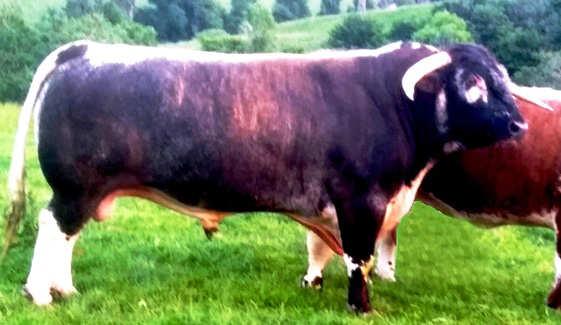THE

In the Hot Seat with Society Trustees
On farm with the Settrington herd
Longhorn proves ideal choice for boxed beef scheme
Looking ahead to the National Show



On farm with the Settrington herd
Longhorn proves ideal choice for boxed beef scheme
Looking ahead to the National Show

Welcome to the Spring edition of The Longhorn. Members are looking forward to a full show season this year, with our National Show taking place at the Great Yorkshire Show on 11th - 14th July, and the Longhorns being judged on Tuesday 11th July. This is always a popular show for Longhorn members and we anticipate big classes with the best of the breed on display
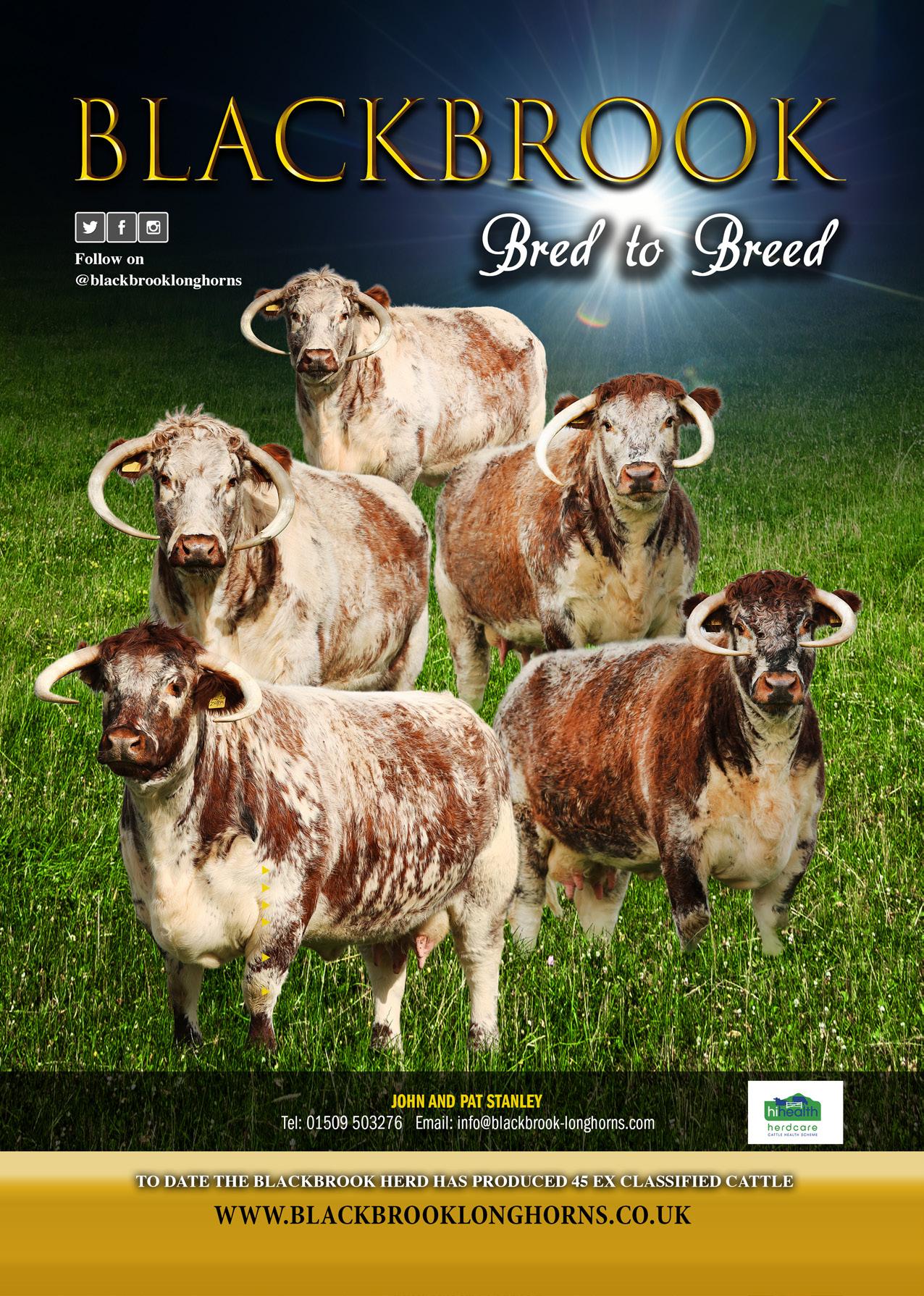
Our voluntary Trustees run the Society and it is amazing how much knowledge and enthusiasm there is amongst the management team. In this issue we profile two Trustees, one who is new to the board and forging her own path in farming and one who has years of experience within the breed and the wider agricultural community.
The Society’s diverse membership is at the core of everything the Society does and we profile two in this magazine, as well as featuring the winners of our Newcomer of the Year Award 2022.
As a member of the Society you will continue to receive regular email updates on Society news and activities and the Knowledgebase of the website has a wealth of information regarding Society rules and regulations. You can also contact me in the office if you have any Longhorn related queries. If you do not receive the regular membership email, or are not a member but would like to keep up to date with Society news then please get in touch.
The Longhorn magazine reflects the Society membership and the activities you all participate in: If you think you have something that may be worth including in the next edition, or you have possible leads for stories or features, please do get in touch.
Calving is in full swing, spring is definitely here and the tantalising scent of a busy summer for the Society is in the air. I look forward to seeing you out there!
Debbie Dann -Societysecretary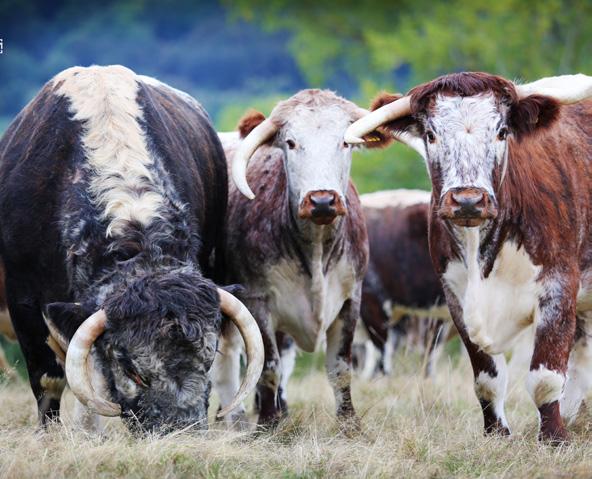
East Lodge
Stoneleigh Park Stoneleigh Warwickshire
CV8 2LH
Tel: 0345 017 1027
Mobile: 07884 065 959
Email: secretary@longhorncattlesociety.com
Society Secretary: Debbie Dann
Society Chairman: Peter Close
PublicationdesignedbyCountryGirlMedia
www.countrygirlmedia.co.uk
www.longhorncattlesociety.com
Follow on Facebook, Twitter and Instagram @LonghornCattleSociety
The Society cannot accept responsibility for errors or omission arising from publication. Information and photographs contained within advertisements may also not be the views of the Longhorn Cattle Society and, therefore,cannotbeheldresponsibleforanyreasonarisingfromthem.

Secretary’s welcome Page 1
Contents Page 2
Chairman’s focus Page 4
Society news Page 6
In the Hot Seat with Society Trustees Page 8
Society sale health information Page 12
Understanding IBR Page 14
Farewell to friends Page 16
On farm with the Settrington herd Page 18
Newcomer’s Award Page 22
On farm with the Etheridge herd Page 24
National Show preview Page 28
Tasty treats with Longhorn beef Page 30 08
In the latest run of getting to know Society Trustees we put Pat Stanley and Thea Woollatt in the hot seat.
12
Unsure of the health requirements for attending Society sales, here’s a check list to help you out.
18
A clear focus on the commercial attributes of the breed is the focus behind the Settrington herd of Ruth Russell.
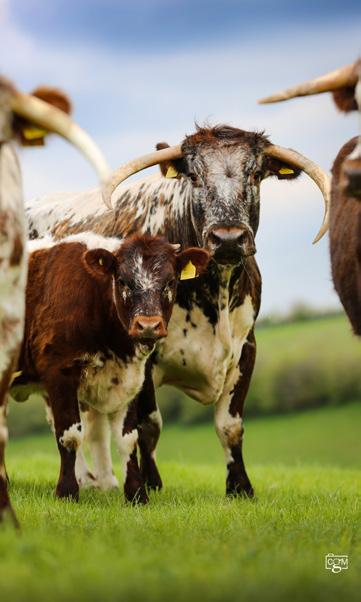
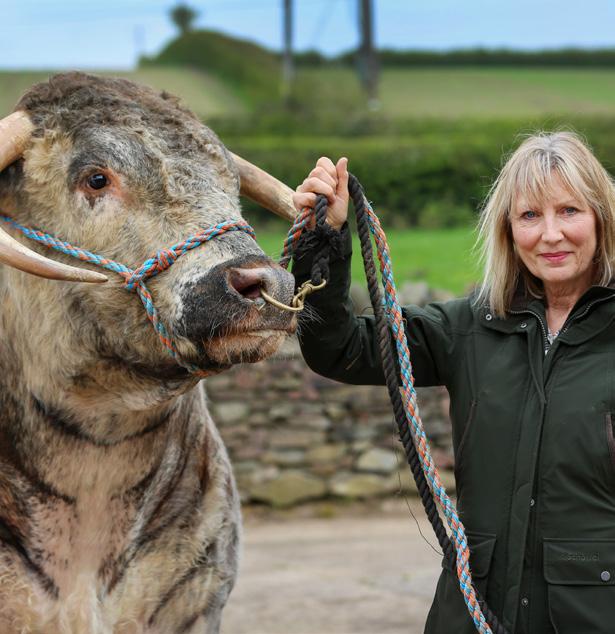
14
Understanding IBR
Get to grips with understanding the effects of the severe respiratory disease, IBR.
Read how Peter Wild’s passion for the breed has lead him straight into the show ring.
30
The Great Yorkshire Show is set to host this year’s National Show.
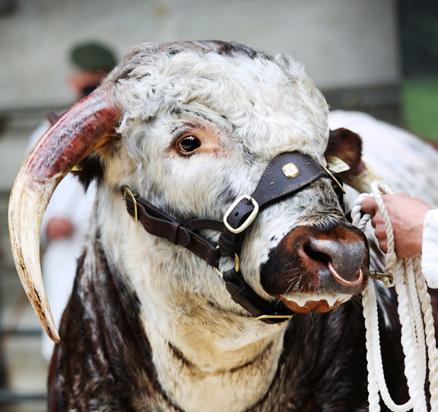
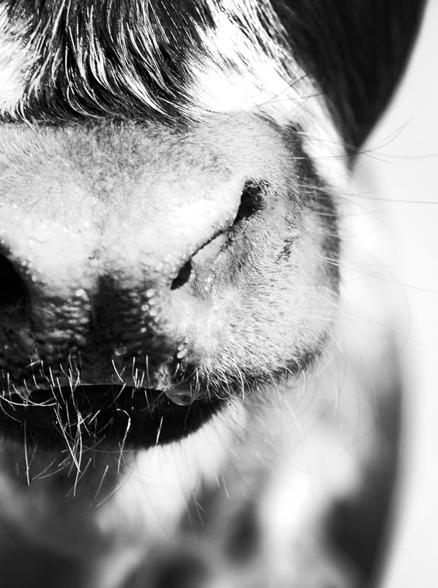
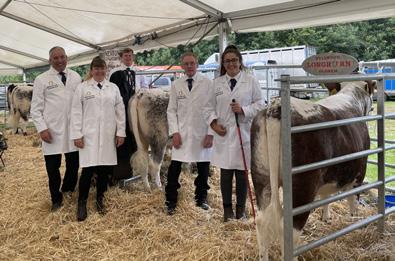
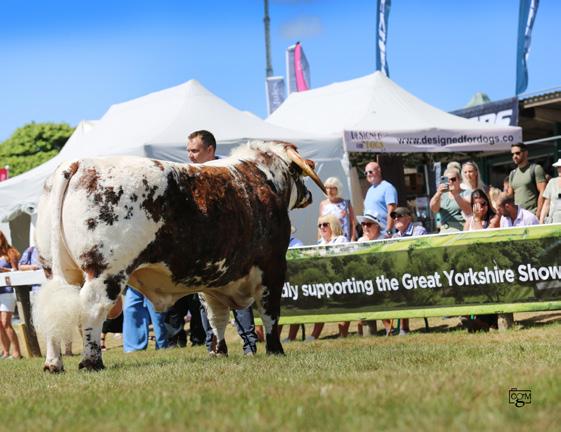
24
Longhorn beef is proving ideal for Dave Phillips’ boxed beef enterprise.
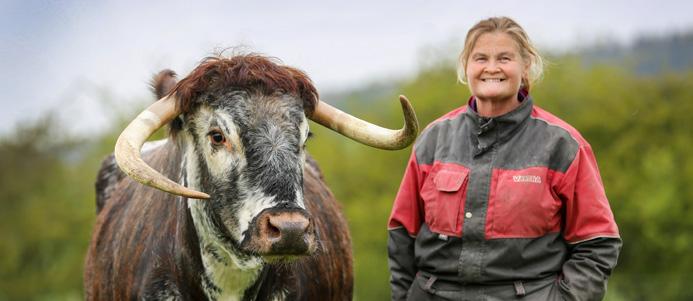
Fancy trying something different in the kitchen? Why not try these delicious Longhorn beef recipes.
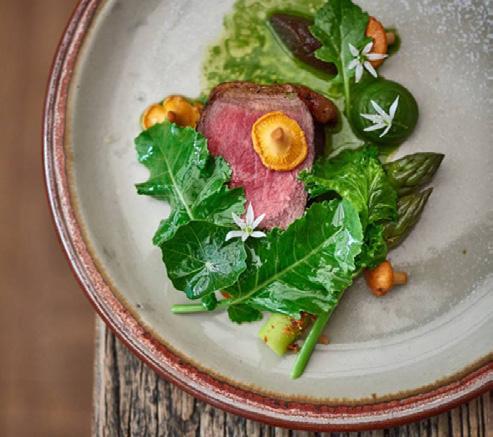
As we welcome the second year of our new magazine, The Longhorn, both Covid and the Russian invasion of Ukraine continue to influence our lives and impact the agricultural industry as a whole.
The latter’s impact is being felt through inflationary feed, fertiliser and fuel prices, the former not only through a burgeoning penchant for early retirement amongst tradesmen, but also a move towards a hybrid situation with respect to ‘working from home’.
The Society’s Council has now established a workable solution where up to half our meetings are via Zoom. It is important that the first meeting of a new Council is ‘live’ - usually in the RBST building at Stoneleigh. It is also best that meetings where important policy decisions are to be taken are face to face with the added advantage that informal chat can take place over lunch.
For many years I have attempted to enlist younger members onto Council, but it has often proved difficult - mainly because they have greater and more rigid routine work commitments and responsibilities than our more senior members. Perhaps with only three live meetings a year, as well as the AGM, it might prove easier to attract more of our younger, active members to consider serving on Council. A broad cross-section of individuals will always be advantageous but equally experience and knowledge is vital for rational decisions to be taken.
It was nearly 50 years ago that I bought our first Longhorn bull in order to breed better crossbred suckler cows out of Welsh Blacks. A few pedigree females soon followed and the project grew legs rather quickly! At that time there were only 150 pure Longhorn cows, there are now about 10,000.
A commercial role is vital for the breed’s stability and we do have a considerable number of breeders focusing on direct marketing to the consumer. The Buitelaar Longhorn cross-bred calf scheme has really taken off and is enhancing the breed’s reputation for docility and ease of calving. And finally, after a 30 year wait, Longhorn cross, easy calving, docile, thrifty suckler cows are making impressive headway in Scotland.
Last year the breed ventured south for the National Show at The Suffolk Show and to Ivybridge in Devon for the AGM with Andrew Owen’s Fowlescombe herd and Dan Holmes’ Westcott herd. The Summer meeting headed north to the Bollin Valley near Manchester.
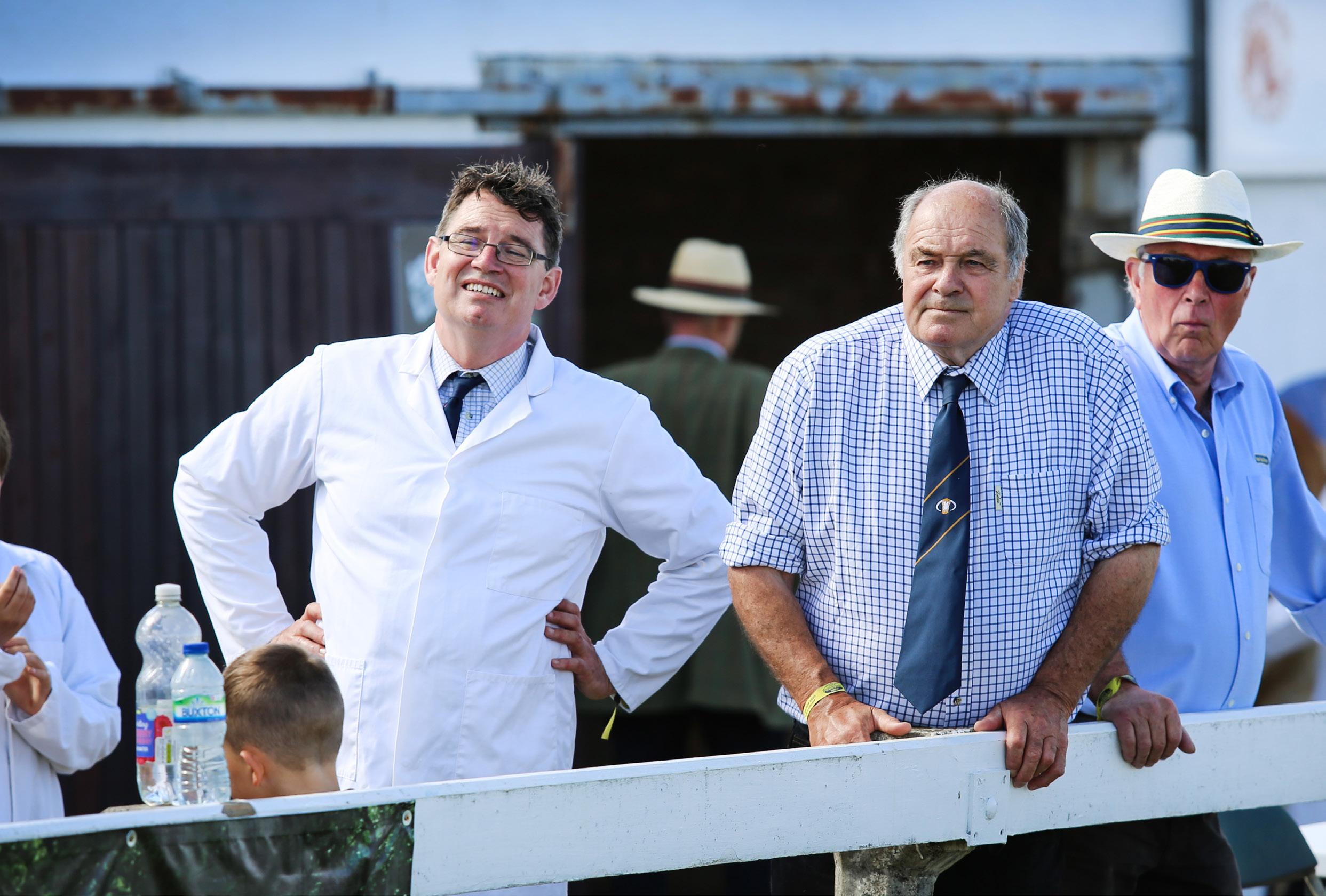
This year it will be all change with the National Show on 11th July at the Great Yorkshire Show and the AGM at Jane Grant’s Longbridge herd near York on Saturday 7th October and a visit to the Blockley family and their Southfield herd on Sunday 8th October. Meanwhile on 6th August the summer meeting heads south to Nick and Babs Fuller’s Halliloo herd at Woldingham in Surrey just inside the M25 and adjacent to the railway station for those wanting a more relaxing weekend.
It has been an honour to again chair Council, with my last stint taking place between 1987 and 1989. I will only be in the chair for just one year as my current double term of office demands at least a year’s sabbatical in 2024. So far I feel that I have had an ‘easy ride’ following on from Tom Mills who, during his three-year term of office, saw through our new up-graded sale health regulations, the modernising of the breed logo, the launch of the new magazine and the bulk of the work on a TB compensation compliant registration of birth system. I hope the rest of my term is just as smooth running.
I wish my fellow breeders all the best for the year ahead and I look forward to sharing my thoughts on the year in the autumn issue of The Longhorn.
Peter Close -SocietychairmanOver the last few months members registering cattle with the Society would have noticed that we have been trialling sending pedigree certificates as emailed PDFs. This has been well received and the Trustees have decided to roll this out to all members. When you pay for your registrations the office will automatically send your pedigree certificates as PDFs for you to print out at home or store on your computer. If this isn’t suitable for you, you can still receive printed certificates on heavier paper and these will be sent out at no extra cost.
The certificates have been amended slightly to show both the breeder and the current owner on the front of the certificate. When cattle are transferred there is now the option for the new owner to have the certificate as a PDF, or the originals can be amended and posted as normal has always been the case. The system is very flexible and is designed to suit the individual needs of each member.
Bull certificates will still be posted on registration or transfer as they are on blue paper, and the 400 day weight is recorded on the back.
Part of the Sustainable Farming Incentive (SFI), the annual health and welfare review is now open to all eligible farmers. The review is the first step on the Animal Health and Welfare Pathway which is designed to support continued improvements in farm animal health and welfare in England.
Livestock keepers can get £522 for funding for a vet, or a team chosen by a vet, to visit their farm and carry out a health and welfare review.
The review is has a number of key objectives:
Reduce endemic diseases such as BVD in cattle
Improve the welfare of farm animals
Increase productivity
Ensure appropriate use of veterinary medicines and vaccines
During the visit the vet or the vet’s representative will provide bespoke advice with some diagnostic testing around endemic diseases. The review is flexible. You and the vet can decide what the health and welfare priorities are for the farm and focus on these.
The Society would like to welcome the following new members to the Longhorn family:
J Bedford, Yorkshire
Paul Bloom, Nottinghamshire
Alice & Caroline Dyer, Worcestershire
Michael Estienne & Sandy Lerner, Virginia USA
Hannah Fleming, Angus
Jamie Halbert & Amy Kerr, Peeblesshire
Bardolph Kerr, Sussex
David & Zoe Knox, Northern Ireland
Tim Nicholson, Cumbria
Richard Pilkington, Wales
Craig Pugh, Wales
David Stannage, Leicestershire
Phoebe Thompson, North Yorkshire
SUNDAY 6 AUGUST 2023
This year’s Society summer visit will be heading to the south east of England to Woldingham in Surrey on the 6th August to visit Babs and Nick Fuller and their son Oliver, who run Church Farm Services. The enterprise includes two livery yards looking after 40 customer’s horses, offering full or part livery, flood lit sand schools and on farm hacking. Hay, haylage and straw sales is also sold to local farmers and into the equine market. Contracting services including foraging, baling and muck spreading are also offered to local farmers and AD plants.
The Longhorn herd started in 2008 when the first two heifers were purchased from Jill Tait of the Saxonbury herd. The following year five more cows were purchased, one from Jill again and four from the Cwrt Henllys herd dispersal sale. Over the next few years three more cows where purchased, but apart from them all the breeding animals are home produced.
The first bull to join the herd, Heyworth Ernest, was purchased in 2009 and since then the family have managed to swap for a new bull! There are now 70 cows and heifers to calve this year and the whole herd is some 220 strong.
Cattle are mainly out wintered on chalk pads and are fed solely on forage - grass and lucerne. This system means our meat can be sold under the PFLA banner. Steers are kept to about 30 months then taken to a local slaughter house and carcasses are then sold to either a butcher in London who supplies high end restaurants and hotels, or to a local farm shop and a local butcher. A monthly pop up shop on the farm also sees some direct marketing to customers. Until the last few years all heifers have been retained for breeding but last year 24 have been sold on for breeding with more to be sold this year.
Cattle graze extensively on the slopes of the North Downs where some reseeding to herb and legume swards has taken place.
There’s no set amount of time for a review but it’s likely to take between two and three hours of your time and the vet’s time. The review will need to include the required testing of livestock and the vet will discuss the test results with you. They’ll recommend actions you can take to improve health and welfare based on testing and their time on the farm.
The review requires:
testing for the endemic disease or condition of the livestock type you’re having reviewed to recommended standards – this means BVD in beef cattle
the vet advising on the health and welfare of the livestock - including issues such as lameness, body conditioning or mobility scoring
a written report and summary prepared by the vet with agreed recommendations and actions to improve the livestock’s health and welfare
For more information go to:
www.gov.uk/guidance/sfi-annual-healthand-welfare-review
The Society AGM will take place on the 7th and 8th October and as part of the farm visits in conjunction with the weekend, members are invited to Jane Grant and Trish McDonnell of Easingwold, North Yorkshire on the Saturday of the weekend.
Originally from West Yorkshire, the family purchased two adjacent ring-fenced farms in Easingwold, North Yorkshire back in 1995.
Jane attended Askham Bryan Agricultural College after leaving school, then entered the family animal feed and haulage business helping her late father Mick Grant. During the late 90’s Jane bought stores in local markets to finish. First generation farmers, her passion for cattle saw her build a modest Charolais suckler herd in her teens, followed by a Simmental suckler herd, then finally in spring 2011, the lure of the beautiful English Longhorn proved too great and the Longbridge herd was formed with the purchase of 11 Longhorn cows and a stock bull from the Rare Breeds sale at York Livestock Mart.
Members of the Longhorn Society since 2011, the family had never shown cattle until a timely visit from Angela and David Blockley one Sunday back in 2021 convinced them otherwise! Angela was particularly encouraging and insisted they had some nice stock worthy of the show ring.
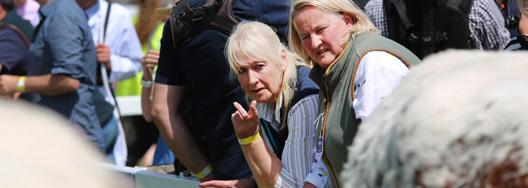
Alisha Lack joined the farm in spring 2021 to help with lambing and calving. After heeding the Blockleys’ advice, entry to the Great Yorkshire Show classes
were hastily made with Alisha and her several siblings there to help, ribbons were won.
The second visit will be to the Blockley family’s Southfield herd. David and Angela Blockley bought their first Longhorns and joined the Society in 1991. In 1995 they purchased eight females from the Whatton/Fishwick production sale and also the whole Lupat herd from Bill and Helen Lupton.
Over the years the herd has had multiple successes in the show and sale ring, with many breed and interbreed championship and record prices at Society sales.
The family have hosted the Society on a number of occasions, with workshops and technical events being held on the farm and they have always been willing to lend cattle for demonstration events such as Beef Expo.
David is President of the Society in 2023 and 2024. Sadly Angela passed away in June last year, but David continues with the Southfield herd and their grandchildren are involved in the breed with their own herds.
“I’d like to think my biggest goal is to ensure that the Longhorn is recognised nationally and worldwide as a serious breed of beef cattle to ensure a prosperous future ahead. I’d also like to think that as a breeder and a trustee I have a responsibility to new breeders so that when they establish a herd they don’t just think about the breed, but they think about the wider farming management policies surrounding the breed, such as grazing and health management.”
“There’s nothing about the breed I would change, other than perception. There’s so much more to this breed than just its ability to look stunning in a field and while it’s great that some look to this breed to have one or two grazing in front of a house, the breed offers so much more and can stand its ground in a commercial environment as a serious contender not only as a maternal breed, but as a high-quality beef producer.
“Honouring a promise made to fellow breeder Donald Cochran that pedigree Longhorns would make it to Australia and after an awful lot of work our end, I’m incredibly proud to say Blackbrook genetics have laid the foundations for the Longhorn breed to feature in Australia. Having visited the country to see some of the calves on the ground it was rather moving to be able to spot some of our maternal Blackbrook attributes in these calves.”
Coupled with that I would love to see the value of the breed increased to what they deserve in the sale ring. Sadly because of the horns the breed isn’t taken as serious as it should. On establishing the Blackbrook herd we invested heavily in the best genetics we could source, but sadly even with the increased cost of production, the breed value hasn’t really increased comparatively when it really deserves to.”
In a farming
where inputs are rising, how do you think the Longhorn can fit in to the wider beef industry?
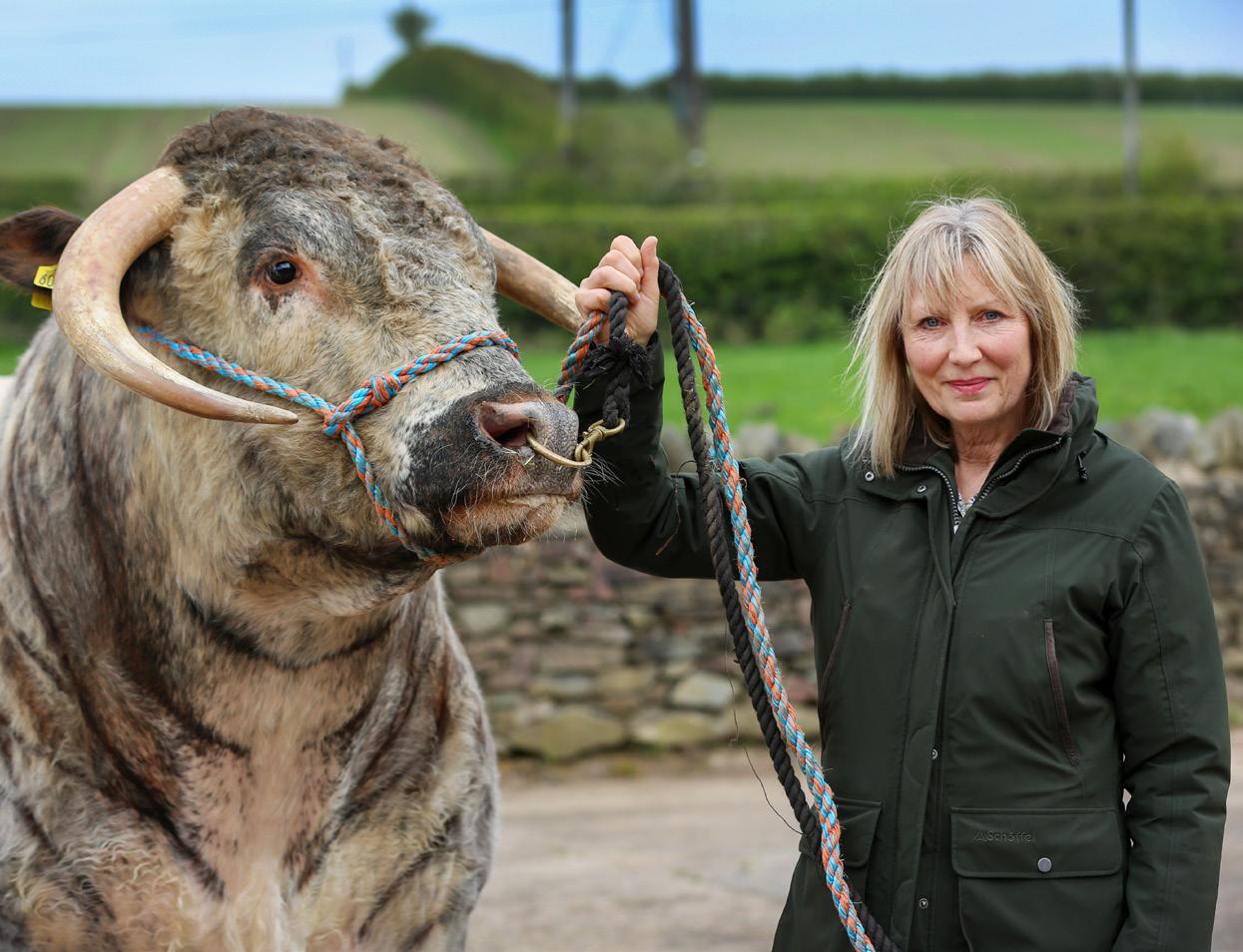
The Longhorn is ideally placed here as it is an incredibly versatile breed. Not only is the incredibly docile nature of the breed testament to the fact they are a pleasure to work with, but they produce fantastic quality beef as well. More importantly though, they don’t require a big bucket! The natural fleshing ability of the breed means they can thrive on grass alone with a little added concentrate when required, but not to the extent that some other breeds require.
How do you think the likes of performance recording and classification have enhanced the breed?
“I think performance recording has ultimately given breeders a goal to work to and it’s given potential buyers a guide of quality to have faith in.”
What’s one thing most fellow Longhorn breeders wouldn’t know about you?
“I’m an international art dealer!”
Fantasy six for dinner?
“Robert Bakewell, Coke of Norfolk (First Earl of Leicester), Charles Darwin, Jeremy Clarkson, Henry Plumb and Charles Cottrell Dormer.”
Name one thing you can’t function without?
“My Jack Russells.”
Name a place in the world you would love to visit and why?
“Anywhere with good cattle, possibly Argentina or Montana.”
What are your three desert island discs?
“Led Zeppelin’s Stairway to Heaven , Guns and Roses’ November Rain and Pink Floyd’s Division Bell.”
Society trustees play a vital role in the behind-the-scenes progression and future development of the Longhorn Cattle Society. Now in her fifth year on Council, here’s Pat Stanley’s thoughts on the Longhorn breed and her role as a trustee.
“I’ve been a Trustee for a year now. I consider it a huge honour to represent a breed I love and be one of the youngest female Trustees as well.”
What do you hope to achieve by being a Trustee?
“Having sadly suffered at the hands of bovine-TB on our home farm, I wanted to help protect Longhorn breeders who had suffered TB. While Longhorn bulls are birth notified, they are not actually pedigree registered on the system until 12 months of age when they have been vet inspected, so at that time I felt it was important to produce a certificate of pedigree registration for a younger bull just in case a herd suffered TB.”
“The Gupworthy Longhorn herd was established in 2004 when mum went off to the Melton Mowbray multi breed sale and came home with a cow and calf – we soon caught the bug for this wonderful breed. Other breeds have come and gone at the farm, both when we lived in Exmoor and now in Chepstow, some have stayed the distance with the Longhorn, others haven’t, but we really do have a soft spot for the Longhorn.”
“Without doubt it was winning the championship at the Worcester Society sale in May 2021 with Gupworthy Thruxton. We thought an awful lot of this bull and he didn’t disappoint by securing the championship and then going on to top male trade at 4000gns.”
“I’d like to be in a position to investigate the myostatin gene in the breed and seeing if perhaps more can be done with that in a progressive way to further compete with other native breeds who are using the gene in a positive way.”
How does the breed suit your own beef farming needs?
“Alongside the pedigree breeds here we run a cattle livery and I also run a training programme for pedigree beef enthusiasts, aptly named The Cow Wash. The Longhorn breed not only has been kept pedigree as we love to show them, but we have seen the commercial merits of the Longhorn cow when crossed with a Charolais, particularly when we lived in Exmoor and commercial store buyers favoured the orangecoloured calf they produced.”
As someone who is representing the younger end of Council, do you have aspirations of standing for chairperson one day?
“I would love to think that one day I could stand as chairperson of this majestic breed, however I think my mum would have something to say about that as she thinks I already have way too much time away from home as it is!”
Where do you think the breed sits in line with competitive native breeds - what’s their biggest marketing point?
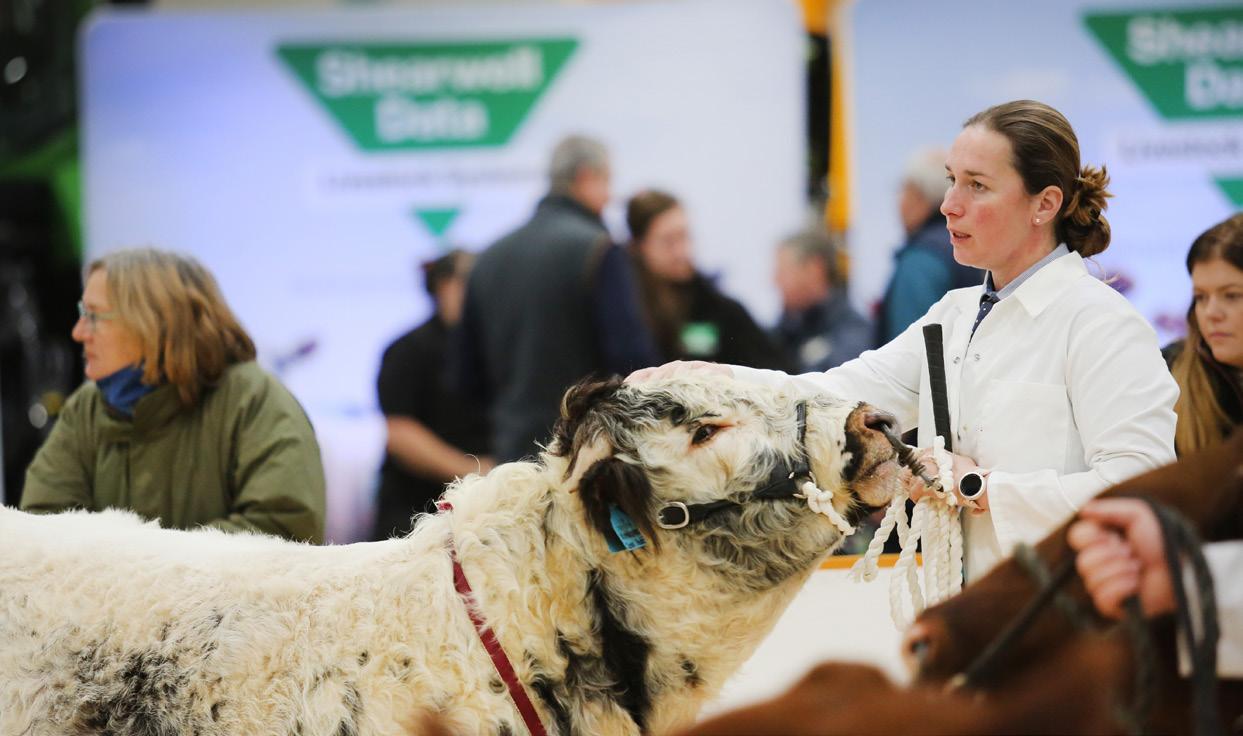
“While many view the Longhorn as the pretty parkland breed with its impressive horns and beautiful markings, the breed is so much more than that. The female attributes of the breed as a great suckler cow can easily match our competitor native breeds. It’s also great to see semen companies marketing the breed as a sire choice for commercial producers.”
What can’t you live without?
“Evie – my side kick pup.”
If you could invite six celebrities for dinner, who would they be?
“Liam Botham, Jools Holland, Jamie Oliver, Jeremy Clarkson, Kate Humble and Amanda Wakeley.”
What tunes are often pumping in the cattle lorry when you hit the road?
“Meghan Trainor – Made you Look.”
Favourite meal?
“Spaghetti bolognaise and garlic bread.”
Name one thing many people might not know about you?
“I have to have my nails done!”
As the youngest member of the Society Council,Thea Woollatt brings a passion for educating the next generation, a love for the show ring and a drive to further enhance the integrity of the breed.
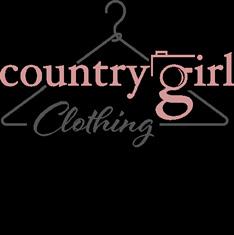
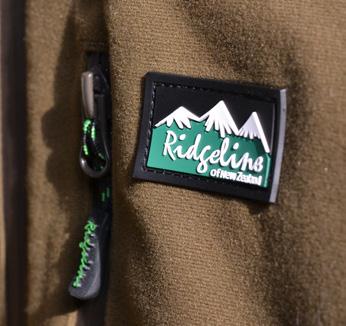

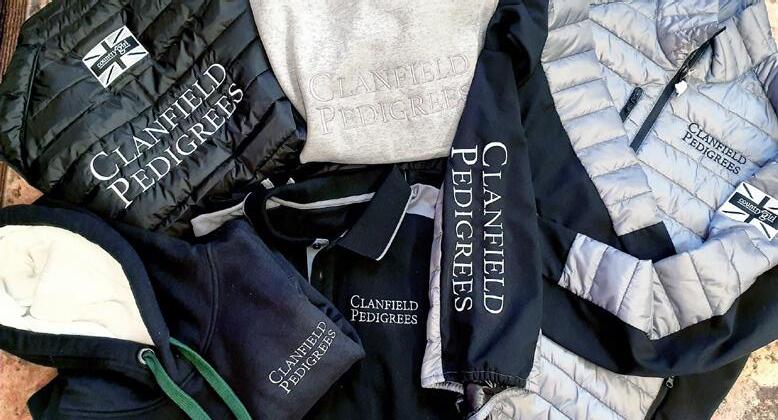
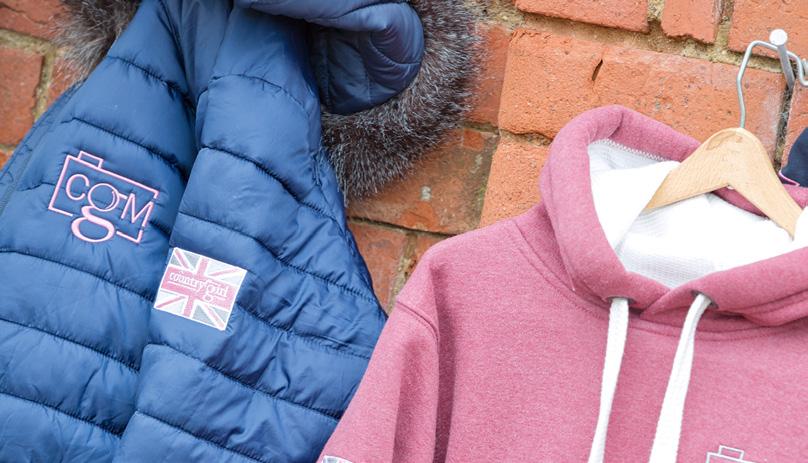
The Society encourages its members to determine the health status of their cattle when offering cattle for sale, be it via private sales or public auction.

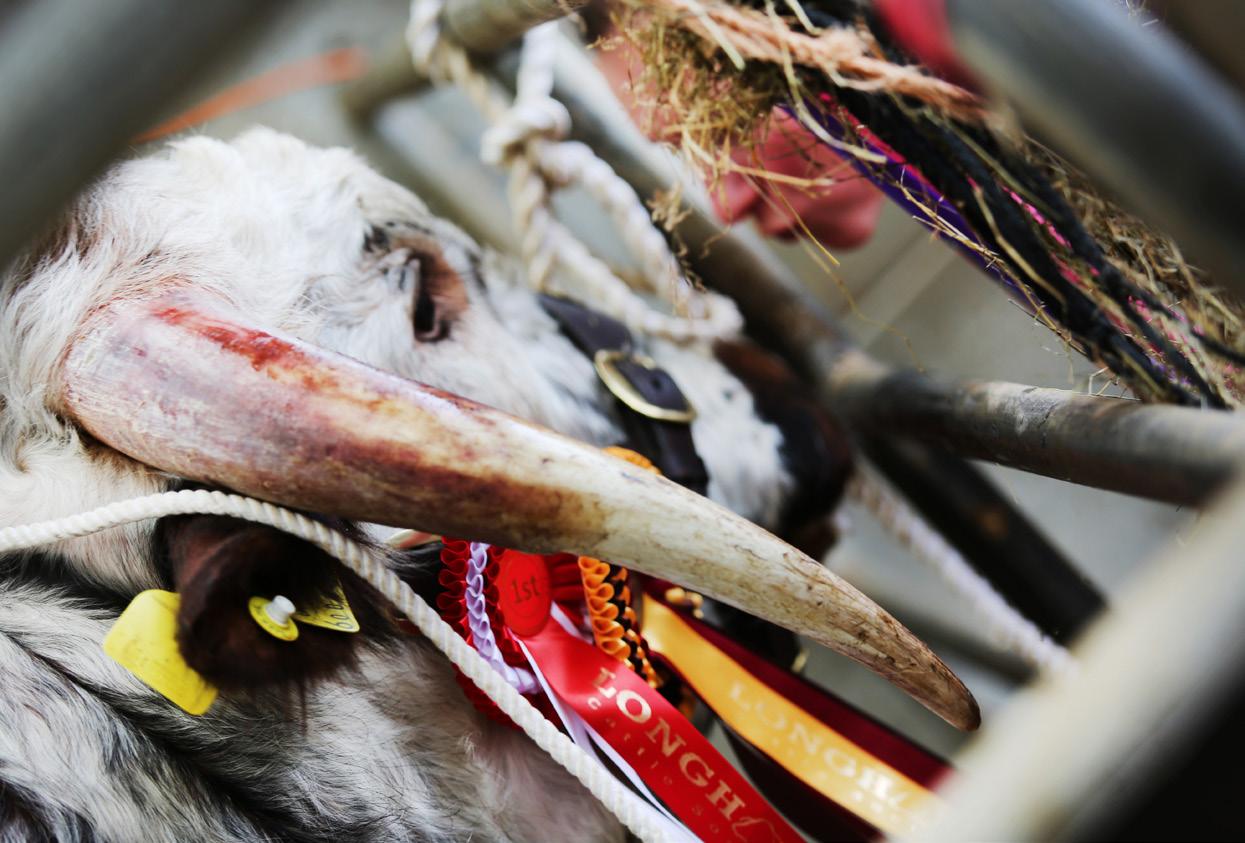
For official Society auction sales, all cattle forward must be TB tested, irrespective of their TB testing interval and the following health rules apply:
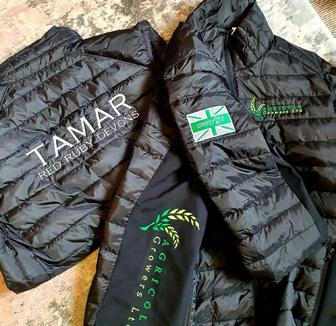
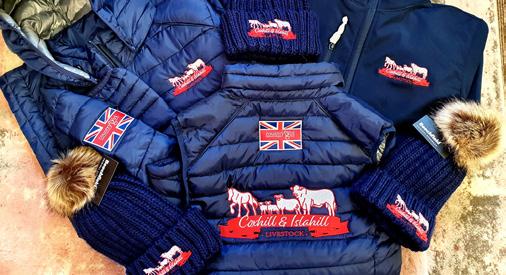
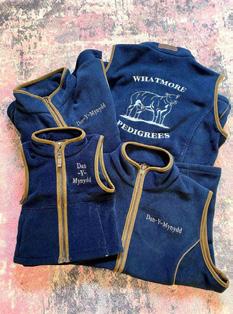
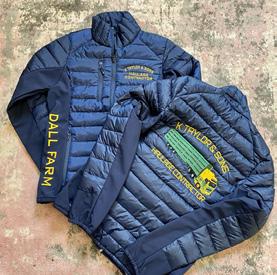

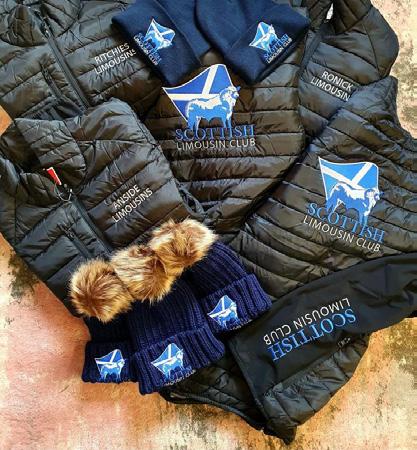
Vendors do not have to be in a health scheme. Individual testing of animals is perfectly acceptable, and can easily be done when the cattle are being TB tested.
Vendors not accredited via a health scheme wishing to blood test should do so not more than 60 days prior to the sale.
Vendors who are active members of a CHeCS approved health scheme and holding current health scheme accreditation are exempted from blood testing for the specified diseases. Members must apply to their Health Scheme provider for an animal health declaration card prior to the sale.
ThefollowingspecificrequirementsforSocietysalesare:
BVD:
CHeCS health scheme members:
Accredited and vaccinated (all cattle except calves at foot).
Vendors privately testing:
Negative blood test or ‘Tag & Test’ for Antigen and then vaccinated prior to sale. Calves at foot should either have a negative blood test for Antigen or been tag and tested negative for Antigen. There is no requirement to vaccinate calves at foot.
IBR:
CHeCS health scheme members
Accredited.
Vendors privately testing:
Negative blood test. When vaccinating a marker vaccine must be used. (Unless routinely vaccinating, vaccinations should be done post negative blood test)
Recommended
Leptospirosis:
CHeCS health scheme members
Accredited.
Vendors privately testing:
Negative blood test.
Neospora
Testing recommended for all females.
Johnes:
CHeCS health scheme members:
There are no further requirements for vendors in risk level R1 or R2. Those that are in risk level R3, R4 or R5 require a negative blood test (all cattle except calves at foot).
Vendors privately testing:
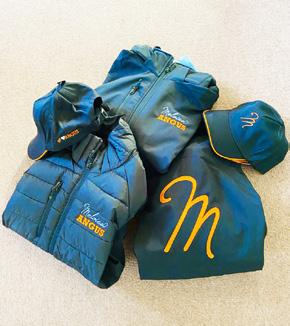
These vendors require a negative blood test (all cattle except calves at foot) or faecal test if blood test timing is not compatible with TB test timing. Johne’s test sensitivities are poor and, therefore, membership of a health scheme is preferred but not mandated.
TB
In all cases vendors must test all animals more than 42 days old on the day of the sale for TB, irrespective of home testing interval.

Infectious Bovine Rhinotracheitis (IBR) is the clinical disease caused by infection with Bovine Herpesvirus 1 (BoHV-1).
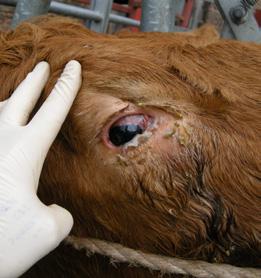
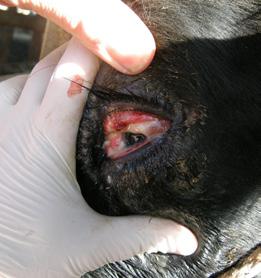
It is a disease of the upper respiratory tract which varies in severity, depending on the strain of virus involved and other factors which may influence the immune status of the animal. In severe cases, damage to the upper airways may lead to pneumonia and sometimes death. BoHV-1 infection has also been associated with infertility, abortion, high temperatures and milk drop.
A high temperature.
Rasping/roaring breathing.
Coughing due to inflammation and damage within the upper airways.
A red, crusty nose with a variable but often thick, pussy discharge.
Red, runny, even purulent (pus-filled) eyes.
The severity and number of these signs can vary widely and they are not all always seen. The disease can progress to a severe pneumonia if debris from the inflamed upper airways is inhaled or, not uncommonly, BoHV-1 can occur alongside other pathogens such as Bovine Viral Diarrhoea Virus (BVDv). When you spot symptoms or sense there is something not quite right, call your vet as early as possible and find out what your IBR status is and any other potential underlying cause.
At post-mortem, it is possible to see the severe damage that can be caused to the trachea (windpipe). The normally pale pink, shiny lining is deep red through haemorrhage because the normal lining has sloughed (been stripped) off, hence the rasping sound when the cattle breath often accompanied with salivation.
In the early stages of the disease, particularly when the animals have been coughing, BoHV-1 (IBR) infection can be confused with other respiratory diseases such as lungworm (husk) infection, particularly if the cattle have been at grass.
Non-steroidal anti-inflammatory drugs (NSAIDs) are perhaps the most important part of IBR treatment as they minimise the damage to the upper airways, reduce pain and make the affected animals feel better. Broad spectrum antibiotics are also often given to protect against secondary bacterial infection. Good nursing should not be forgotten.
Most animals infected with BoHV-1, assuming they recover, remain latently infected for life. The latent virus can be reactivated at any time, usually precipitated by stress, to spread and cause more disease.
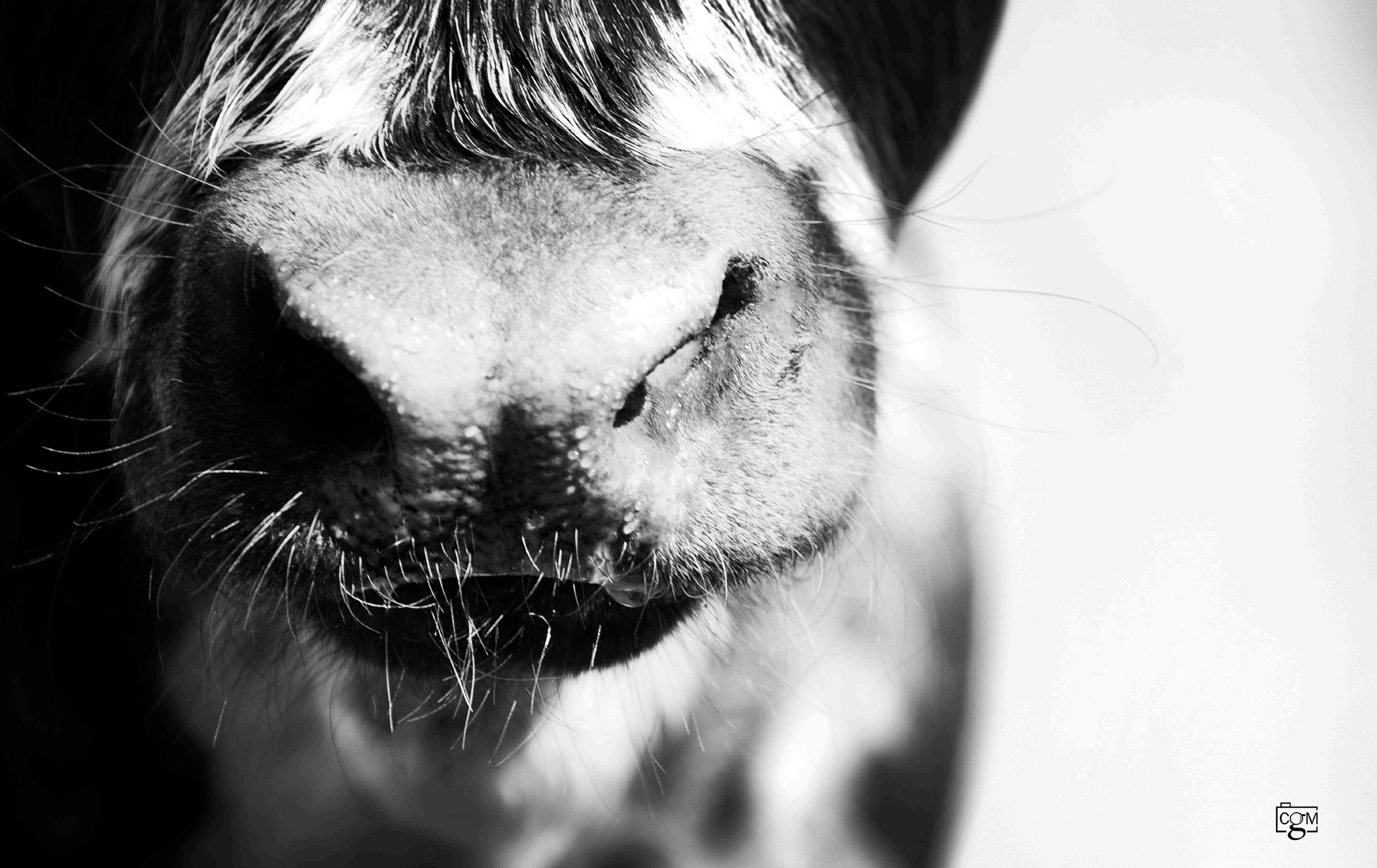
Managing stress is important in controlling IBR. When housed, animals should be kept at an appropriate stocking density in well ventilated, dry buildings. Access to good quality food and water should be ensured and other infectious disease, particularly BVDv, should be controlled.
Vaccination can play a useful role in the control and prevention of IBR. Many different vaccines, both live and dead are available to protect against disease and the choice of which to use should be made carefully following discussion with your vet. Whichever vaccine is chosen, it is important that it is administered carefully in accordance with data sheet recommendations if it is to be effective. IBR is unusual in that the vaccines can be used in the face of an outbreak as part of the treatment program. Again, this should be discussed with your vet.
Marker Vaccine
The use of marker vaccines allows laboratory testing to be used to distinguish antibodies raised because of vaccination from those raised following challenge by the disease. It is important to recognise that vaccination with a marker vaccine will not prevent antibodies being formed against field-strain virus if a challenge occurs.
Herds free of BoHV-1 infection and those trying to remain free of infection must pay attention to biosecurity, particularly when animals are introduced onto the farm. Farm boundaries must be secure to prevent nose-to-nose contact with neighbouring animals of unknown health status.
When testing quarantined animals for the presence of antibodies to BoHV-1, all animals that test positive should be assumed to be latently infected with the virus. Cattle are usually tested via taking blood serum. It is also important to recognise that not all latently infected animals have detectable antibodies to the virus.
In the acute stages of the disease,ocular/nasal/nasopharyngeal swabs can be taken,and the virus isolated by PCR at the laboratory.
Maintaining animal health is essential if dairy and beef enterprises are to be successful. A vaccination programme is an important part of this health plan. Certain questions need to be answered before a vaccination programme can be planned including why vaccination is required, what is the aim of vaccination programme, what vaccine should be used, when and how? There are some caveats as to certain stock that should not be vaccinated, e.g., potential bulls for AI studs and export. Please discuss this with your vet before purchasing your vaccine.
Vaccination programmes should be customised for your farm and incorporate cows, bulls, calves, and heifers. Consider joining a CHeCS-approved Cattle Health Scheme to monitor the BoHV-1 status of your herd.
For best results work in partnership with your vet to monitor the status of your herd and to put in place your farm’s individual vaccination programme.


The Society was saddened to hear of the death of Geoff Wild of the Riffhams herd, who passed away on Monday 16 January aged 90.
Geoff and Briony started the Riffhams herd based near Chelmsford, Essex in the late 1980’s and enjoyed many years showing their cattle. Geoff’s good stockman’s eye led him to buy Colaba Krypton from Peter Guest and the bull became one of the most popular bulls in the Society’s AI portfolio as well as having substantial success in the showring in the 1990’s.
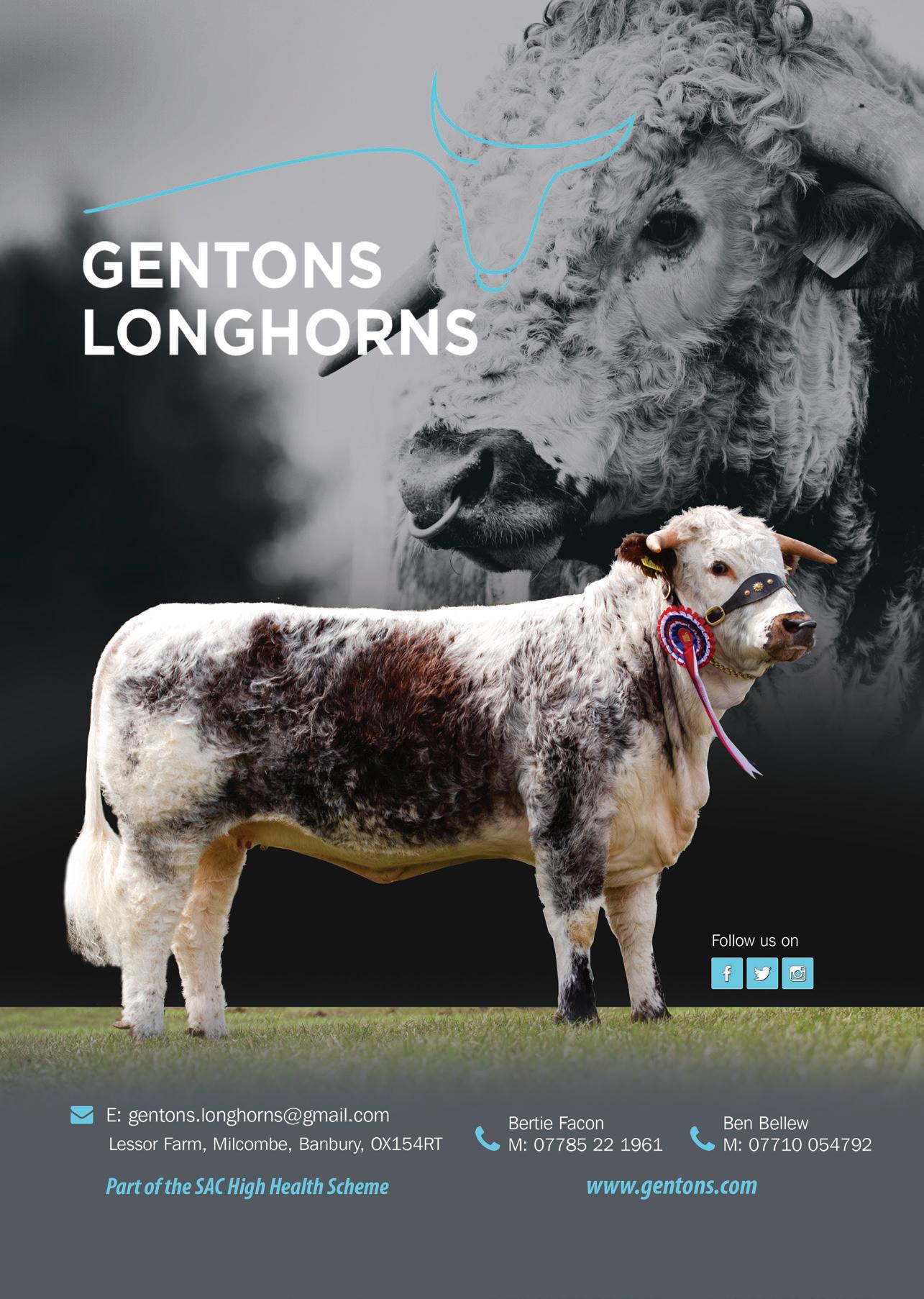
Geoff was Society chairman from 2010 to 2012 and always took an active interest in Society matters, having donated a number of show trophies including one for Young Handlers, a cause very close to his heart. Most recently he came to the Society’s AGM weekend in Devon in October 2022.
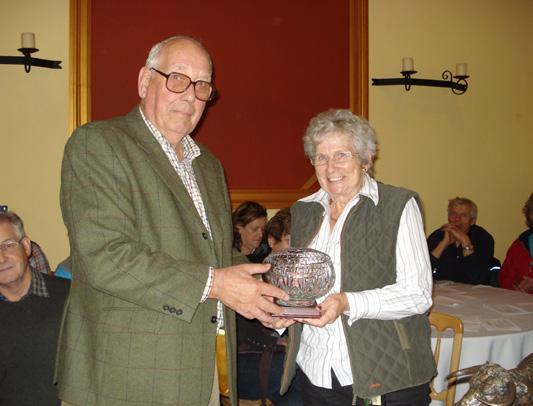
Geoff and Briony’s other love was their donkeys, which they used for rides at shows, fairs and events, they were much in demand at Christmas where
The Society was saddened to hear that Mark Barden of the Holnest herd passed away peacefully on Wednesday 25th January after recently being diagnosed with an aggressive form of cancer. The Holnest herd which Mark founded and built up was his pride and joy. He began the herd not long after moving to Dorset ten years ago with three cows and calves at foot from John and Pat Stanley followed by a bull, Long Ash Nuggett, from Sid Hollier. After Nuggett came Gentons Texas from Bertie Facon and the herd steadily thrived. In recent years Mark was delighted to be able to provide other herds with breeding stock. He also kept a small flock of Dorset Horn sheep and took a deep interest in preserving our native breeds.
For the time being Jenny will be keeping the Holnest herd going with help from Dave Phillips of the Etheridge herd.
donkeys seemed to be able to be in six places all at once! One of their donkeys transported Geoff on his final journey to his funeral service in Barnstaple. Ten years ago Geoff and Briony retired to Devon, buying a small plot of land where they continued to have a few donkeys, plus some Jacob sheep that they showed locally for a few years.
When asked if there was a bull Ruth would use again if she could, that accolade goes to Settrington Quest. “He was a super bull, not the biggest, but very well put together. In fact, he was used in the filming of the Dads Army film pursuing Captain Mannering!” Ruth recalls.
Traditionally horn blowing is carried out on the four corners of the city wall in Ripon, historically to tell residents all is safe and well from attack and it is the horn of Quest which is still used to this day and with part of him living on, this is a very fitting ending for a favourite bull.
“In 1994 my father rented a paddock in our village and thought that Longhorns would be nice to look at. He was fattening stores at the time and wanted some sucklers which would complement the breeds we already had,” explains Ruth.
It was at this point that John Harrison established the Settrington herd with the purchase of two Longhorn cows with calves at foot; Templeson Crocus and Clinton Lilac. John soon realised that AI was not best suited to his system, so more Longhorn female purchases followed to justify the use of a bull. So, in 1995 the herd increased by another 13 females, mainly heifers of which five were from the renowned Fishwick herd.
Today the Settrington herd, which resides just on the edge of the North Yorkshire Wolds, comprises 25 cows with the best heifers retained for breeding and the rest fattened. John used to finish store cattle until the herd was expanded and the herd now totals around 70 cattle including finishers.
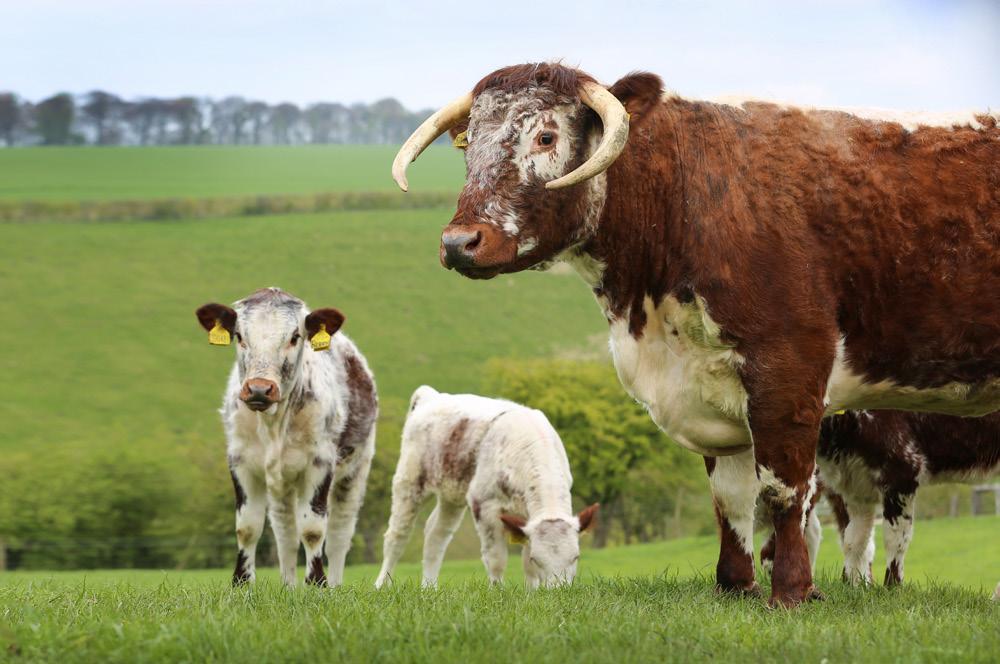
“I have stuck to Dad’s breeding policies. I probably kept too many females at the start and I have become more selective over time. In 2022 I kept two bulls entire; they must be outstanding to make the grade. Reputation is everything in livestock and they really must be the best,” says Ruth.
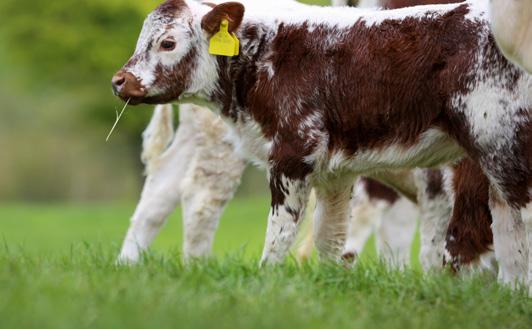
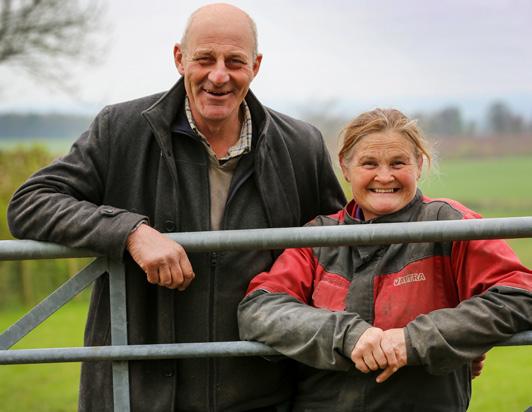
Previously, John and Ruth supplied meat for the Ginger Pig in York but with the closure of the local abattoir, physically getting the animals there became more difficult. Therefore, a new outlet was found in the Star in the City in York which took a whole carcass twice a year. During this time the rest of the stock were sold through Malton Livestock Market. “it’s taken some time to develop the market for the Longhorn, but once the word spread the demand rapidly increased,” she adds.
The female lines hold some firm favourites for Ruth which all combine longevity and true breed character. “Fishwick Merry was John’s favourite and he showed her successfully so it was a sad day when she passed away. Her daughter Tangle was with us for 15 years and reared 12 calves. I get so attached to them and have definite favourites,” she adds.
It was in 2005 when Ruth came home to the farm to work as the secretary for the family business. “I always loved the animals and the outdoors so when Dad asked if I wanted to come home I jumped at the chance. I have two brothers, neither of which were keen to farm so I went home and never looked back,” explains Ruth. John is of course delighted and aged 80 still does the spraying work to keep his hand in.
The stock bull which Ruth feels has really stamped the herd is Blackbrook Illusion. By Park Grace Dieu Two Tone and out of Fishwick Mirage, Illusion was dark in colour with good length. He was a sizeable bull with a good nature which Ruth feels is vital when you spend a lot of time working cattle on your own. To further this Ruth halters and disbuds all of her breeding animals for ease of handling. “Previously I was only disbudding the fattening cattle, but once there is a mixture at housing this can become an issue. Disbudding was a carefully considered decision,” says Ruth.
The current stock bull is Harold Uncle, by Fishwick Philanderer and out of Settrington Swift who was sold to Harry Hodgson as a heifer. “Swift carries a female line which we wanted to keep going in the herd. Her dam, Settrington Playful, is the oldest cow currently in the herd at 13 years and she always produces a carcass-type calf and we have no other daughters from her,” adds Ruth.
“Uncle is a young bull who at three years of age is still growing. He went in with the cows in 2021 as our stock bull went lame. He is filling out now and his first calves are promising indeed,” Ruth explains.
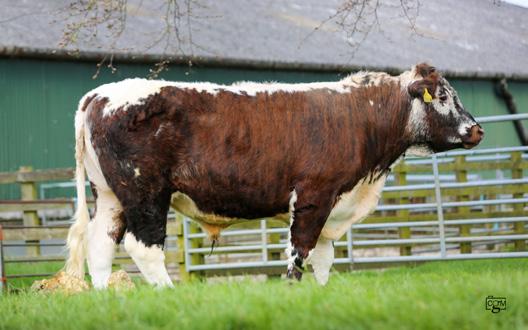
Being a self-confessed “livestock person rather than machinery,” Ruth Russell had an affinity with the Longhorn breed from a young age.
I keep two bulls a year entire to sell, I have to be incredibly selective.
The exceptional quality of Longhorn beef combined with traceability is a huge plus for us.◖Ruth Russell and her husband Andrew Ruth Russell, Settrington herd
Now all finished cattle are sold solely through Stepney Hill Farm Shop in Scarborough, who take one animal a fortnight throughout the year. “Previously we sold meat through boxes, but then the farm shop sales really took off. The beef boxes certainly served a purpose, but they are a lot of work and in hindsight we should have charged more. The farm shop is an excellent outlet for us with discerning clientele,” explains Ruth.
The fattening cattle are reared extensively to two years, with two summers at grass then a diet of homegrown barley. There is no lush grass for the herd to graze in a lower rainfall area on shallow chalk and flint, so this is supplemented with grain and a small amount makes a difference.
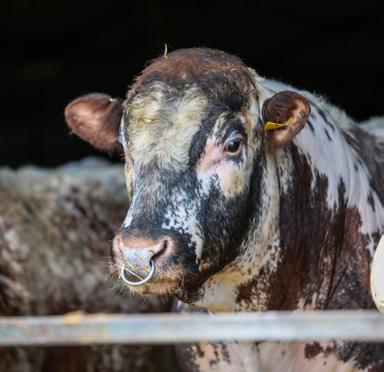
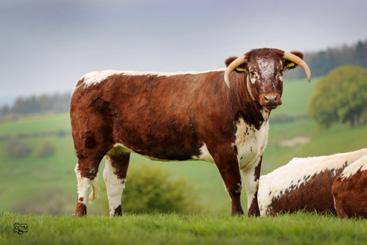
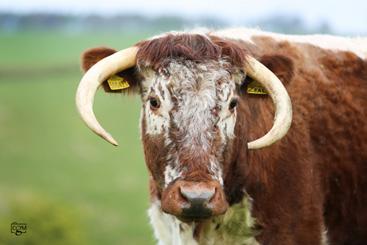

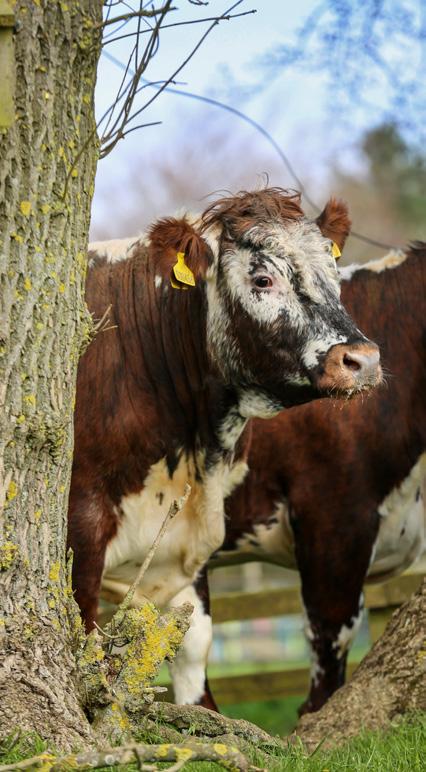
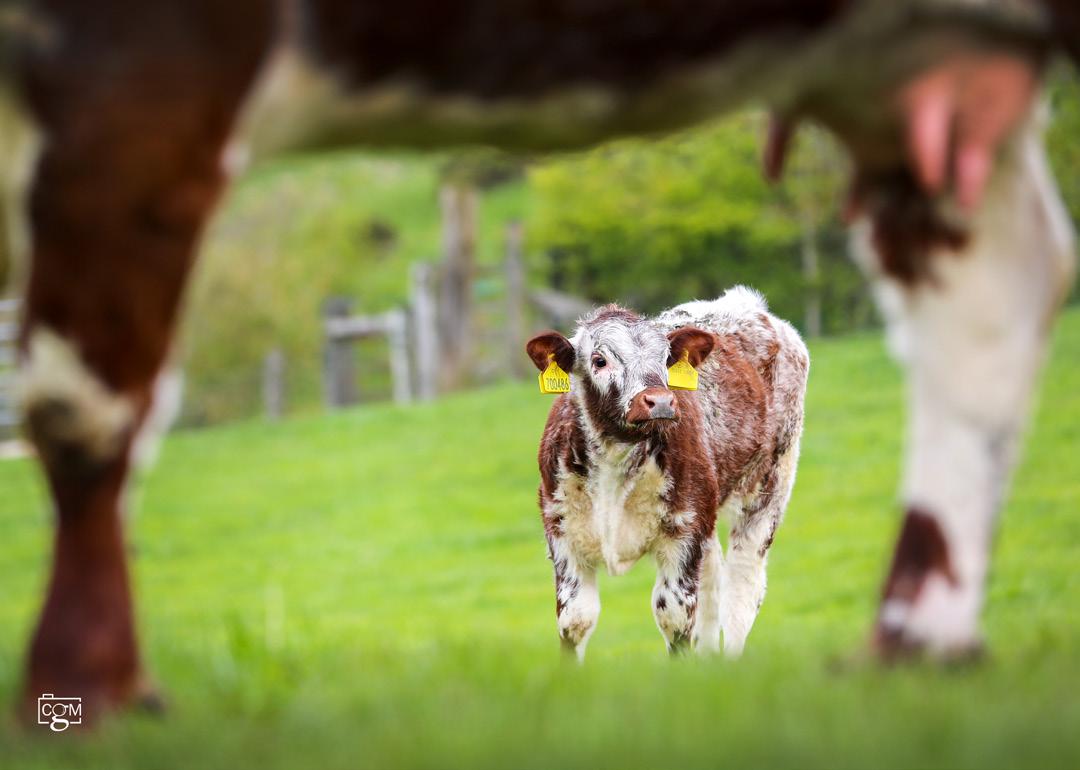
A significant amount of Countryside Stewardship work takes place on the farm and with a large number of ground nesting birds, there is educational access from primary to sixth form students, as well as other visiting groups. These visits also provide education in farming to expand the knowledge of future generations.
In 2007 the farm was placed first in the northern area and finally third at national level in the RSPB Lapwing Champion awards, followed by the north eastern winner of the RSPB Nature in Farming Awards. “We
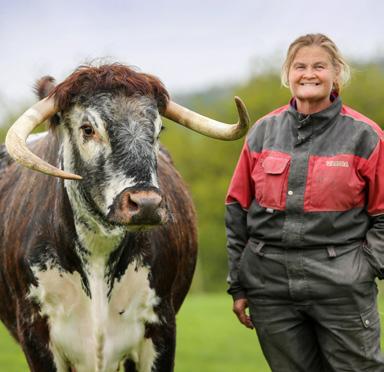
were recognised for our butterfly conservation, holistically enhanced plant life, margins and beetle banks, fallow fields for Lapwings and Skylarks, as well as nesting Curlews and growing pollen and nectar areas. To have our work recognised was an absolute honour,” highlights Ruth.
The herd at Settrington is a commercial venture. There is rent to pay and a living to be earnt. Ruth feels the animals have the best possible life.
“Animals are so important for biodiversity; cows get blamed for a lot of things when in fact they are sustaining the carbon sink by grazing and cow pats are part of the food chain for many species. We spread manure which feeds the invertebrates in the soil, providing food for birds and their chicks, and the cycle continues. Farming really does work in harmony with nature”.
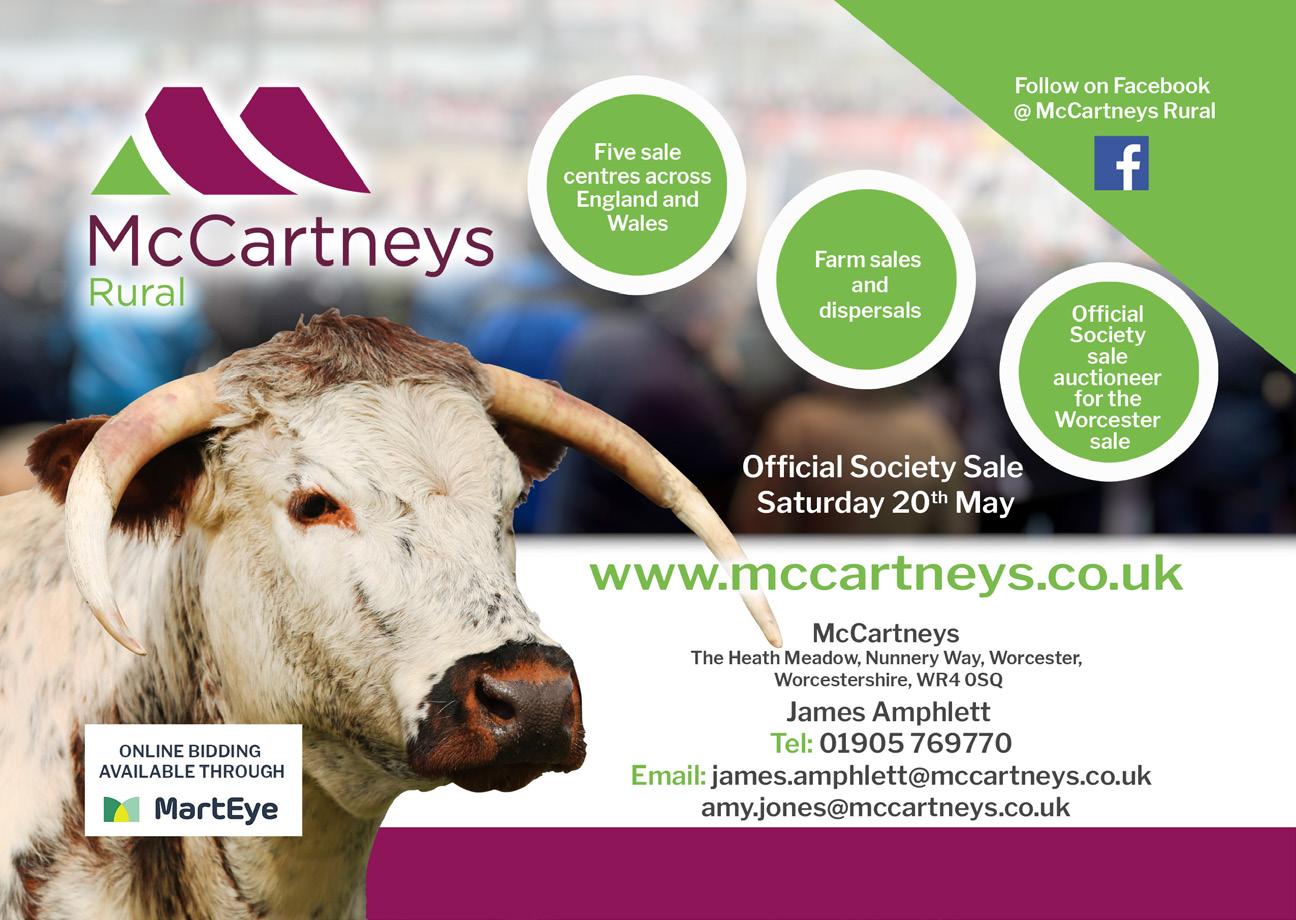
The fattening cattle are reared extensively to two years of age, with two summers at grass.Ruth Russell, Settrington herd
From looking for a couple of native-bred cattle to tend to during his retirement from running the family sheet metal and laser profiling business, Peter Wild is now looking forward to his second season on the show circuit having kick started a strong passion for showing with his niece Charlotte along with sister-in-law Vicky.
Peter is also calving substantially more than the intended two cows and is still working full-time, so safe to say Peter’s plan to retire some 13 years ago with two cows for an interest didn’t quite go to plan! Having considered several breeds following a period of 30 years with no cattle on the farm, Peter was adamant he wanted a native breed. Farming right on the edge of the Pennine Moors with two inches of top soil at best, the abilities of the Longhorn ticked every box and Peter fell in love with the history of the breed, as well as their physical appearance. “I always remembered my father talking about the Longhorn breed when I was growing up and with them being relatively native in our area, it all just came together. I knew it would have to be Longhorns for me,” explains Peter.
So in 2011 two foundation maiden heifers were purchased from Robert Middleton in Sheffield, therefore establishing the Fullwood herd. Both heifers were Southfield bred. the dams having previously been purchased from the joint production sale held along with the Blackbrook and Fishwick herds. Peter was so delighted with the pair that he went directly to the Blockley family only a couple of weeks later and purchased two in-calf cows (one of which remains in the herd today) and a maiden heifer. It was now that Peter had been bitten by the bug and as luck would have it the two cows went on to both have heifer calves.
Not content at seven females, another two heifers were purchased in 2011, this time from the sale in Beeston. Heronbrook Jayde and Douthwaite Ebony joined the herd and have had a huge influence on the female lines still present today. Jayde has been a
particularly prolific breeder, with the majority of the females within the herd today being descendants of this cow and Jayde herself still active in the herd.
Next it was time to make the all-important purchase of a foundation sire and following a visit to Phil Robinson, Blackden Krypton was the bull for the job. “Krypton was a big framed, dark coloured bull and he produced some cracking calves for us, so we kept him for several years,” comments Peter. In 2016, Krypton sired Fullwood Quest who sold to a large Longhorn herd in the Netherlands following an on-farm visit, which is an achievement the family are rightly very proud of.
To keep Krypton for a while longer with the 15cow herd cow, a second bull was bought this time from Peter Close. “Fishwick Oberon was just a stunning bull, we bought him at the on-farm sale for a considerable amount of money at the time. He was sired by Fishwick Lord of the Rings which was a bloodline we knew we wanted within the herd,” says Peter.
The importance of the stock bull is paramount within the Fullwood herd and the current bull Fishwick Silver Star is already living up to those before him. By Heronbrook Ned Kelly, he’s out of a Settrington cow bred by Ruth Russell. “We just knew we had to have him, I have always admired the Ned Kelly sire and the depth of bloodlines is exceptional,” says Peter.
In 2022, the Fullwood herd took to the show ring. “I blame Stephen Horrocks and his granddaughter Jess,” Peter laughs. In fact, the families have become great friends and the showing interest was first sparked by Stephen bringing a cow to be served by Fishwick Oberon. “Stephen got
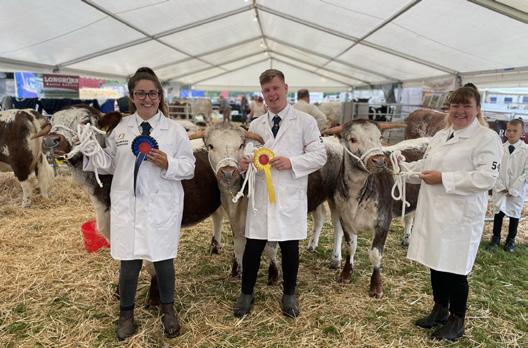
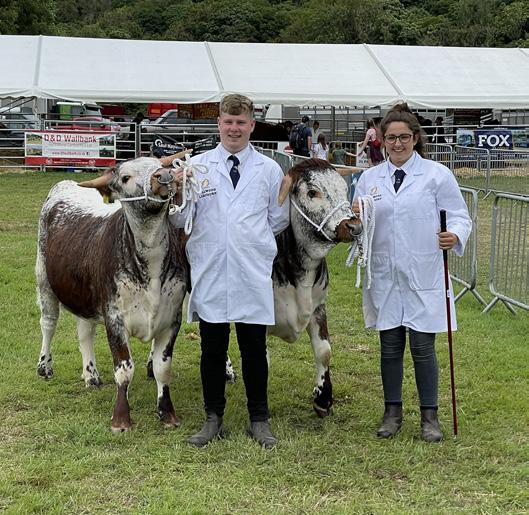
Charlotte to lead a cow around, she took to it well and Stephen said it was about time she went showing. In 2021 Charlotte joined Stephen and Jess helping out with their show team so it’s grown from there,” he highlights.
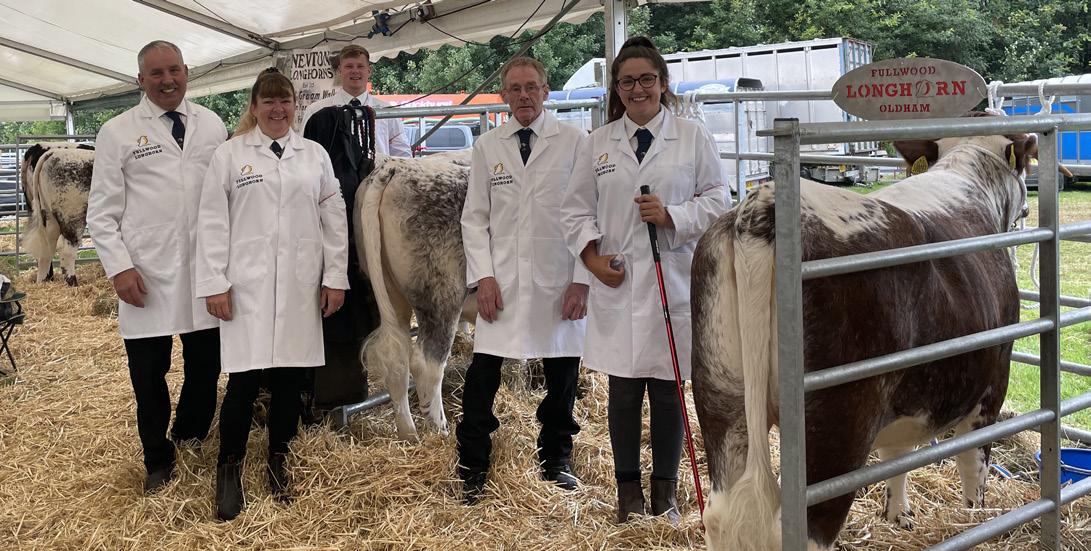
The ring debut for the herd came at Lancashire Show in 2022 and not to do things by halves, three junior heifers made the journey: Venus, Violet and Verity. “We loved every bit of it. The heifers came second, third and fourth and we had a really enjoyable time. Talking to other farmers and the public was so enjoyable and also so important. We went on to do Garstang Show the same year and the cattle were so chilled, they really enjoyed it too,” says Peter.
Communication with the public is something the family are passionate about. “We take plenty of brochures and take the time to talk to people and spread the message of the breed and of the positivity within the farming industry,” Peter explains.
When asked if there is any advice Peter would give on getting ready for the show he jokes: “Charlotte and Vicky do all the work, I just do as I’m told”. But in all seriousness, Peter believes that halter training is the best thing they have ever done on the farm.
“The heifers we showed are so quiet and responsive, it is so convenient for handling, we wish we had halter trained years ago.” He also believes that not only should the cattle be as smartly presented as possible, but the exhibitors should be too. “We take plenty of spare clothes, ties, white coats, it is all about doing the job right”.
Peter would encourage anyone to take part in showing their Longhorns, in fact, the trailer is ready to roll again this year, this time with Fullwood Wren and Fullwood Wilma making up their show team.
“It’s not as daunting as you think. There will always be someone there to help if needs be or to give a bit of extra advise, we’ve learnt so much from other exhibitors,” he says.
Ease of management, versatility and a growing demand for breeding bulls are just some of the attributes which make the Longhorn the ideal breed for busy Dorset-based couple Dave and Carla Phillips.
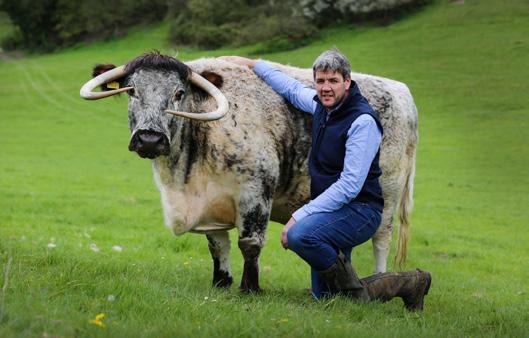
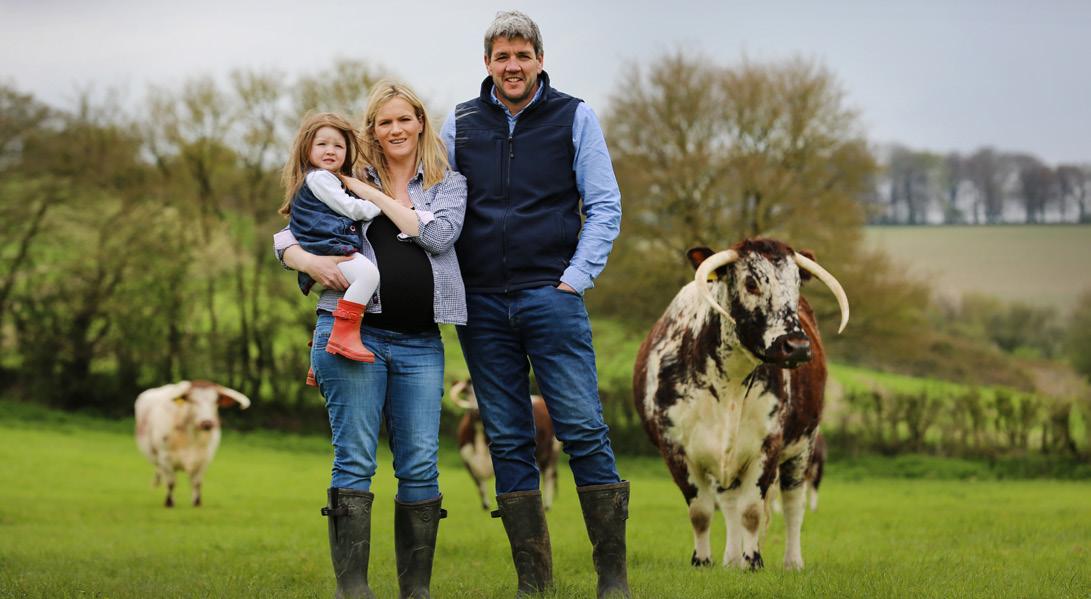
Dave’s love affair with the Longhorn breed began 20 years ago when working with the dairy herd at Goodwood Estate, West Sussex. Dave fell in love with the two striking Longhorn cattle which came under his charge, roaming the Estate’s parkland.

Some 10 years ago Dave moved away from dairy herd management to his current job as a vet tech cattle foot trimmer with Synergy Farm Health. Dave found life wasn’t the same without cows to manage, so he decided to make his first cattle purchases and Longhorns seemed the obvious choice to establish the Etheridge herd.
The first two heifers did not have far to travel with Dave and Carla being near neighbours to Sid and
Anne Hollier of the Long Ash prefix. “I visited Long Ash through my work by becoming their foot trimmer and had great admiration for the female lines which Sid and Anne had produced and so my first two purchases were very shortly joined by a second pair of Long Ash yearling heifers,” explains Dave.
The majority of the Etheridge herd is now descended from these four initial heifers, with AI used for the first three years, after extensive research into the male bloodlines from which to establish the herd.
These early AI sires included Parc Grace Dieu Tinhorn and Eyebrook Richard, a bull with a glittering show career including being part of the Burke Trophy winning pair at the Royal Show along with multiple breed championship and reserve interbreed titles.
“We continued to use AI across the herd, moving from Eyebrook Richard to Fishwick Lord of the Rings which had won the Longhorn Cattle Society Bull of the Year title in 2012. He left a great impression within the herd, leaving the length and style we were hoping for.
“More recently, Genus sires have also been used, namely Carreg Superman and Carreg Sainfoin both of which carry the Fishwick Macavity line, another well-respected prize-winning sire,” adds Dave.
as a conveyancing Solicitor, alongside two-yearold daughter Isla and new arrival on the way, the couple have also started a box beef venture.
“The aim is to kill about six animals a year for boxes, with these sold in and around the local area. We’ve already seen a huge surge in interest through word of mouth and the local community Facebook page. We are boxing animals on a 16-way split. I am assessing them by eye and they are killing out at 25-26 months at about 350kg deadweight. Anything over 400kg equates to negative equity,” comments Dave.
The couple are passionate about putting a focus on where consumers’ food is coming from and are aware of people buying less meat and but buying better quality and having raised levels of interest in buying locally with their grass-fed, sustainable Longhorn meat at the forefront.
The calving pattern at Etheridge allows for a spread of youngstock and finishing animals throughout the year.
“Once weaned at 7-8 months, they are in the shed on silage and creep, while the younger calves outwinter with their mothers on the chalk down. We are lucky that our ground allows us to out-winter the cows and young calves. The 80 acres of chalky downland which we farm are dry and free-draining, so we are able to just buffer feed with ring feeders in a Dutch barn and the cattle come and go as they please.”
To add to their full-time jobs with Dave as lead Vet Tech at Synergy Farm Health and Carla working
We are lucky that our ground allows us to out-winter cows and young calves.◖Dave and Carla Phillips of the Etheridge herd, with two-year-old daughter and budding cattle enthusiast, Isla. ◖Dave Phillips alongside one of his older cows, Long Ash Mandy.
In order to grow numbers to their ideal herd size of 20 breeding females, heifers have been retained within the herd and not regularly sold for breeding. However, now having reached their ideal herd size, bulls and heifers are being offered for sale.
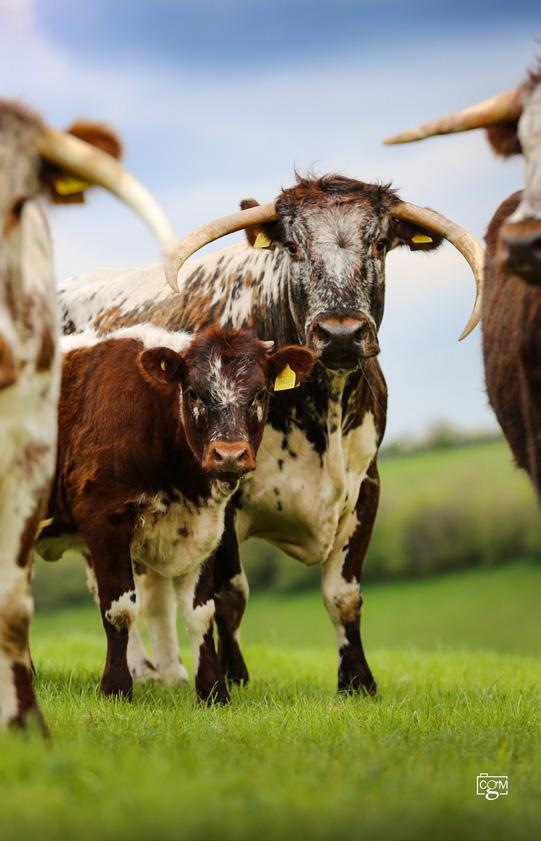
“The annual bull crop sees one AI-sired bull retained for use within the herd at 12 months of age. This bull is then sold on the following year, as a proven yet still young bull, maintaining his optimum worth in monetary value as well as having given back to the herd in siring a crop of calves.
“Buying a bull is a huge financial outlay for a smaller herd such as ours which calved 14 cows in 2021. Therefore, if we can breed a bull by AI to use within the herd it allows us to keep up with a fast-moving gene pool, as well as maintain the value of a young sire before a fall in his value,” explains Dave.
The 2022 calf crop is by Etheridge Tornado, a son of Fishwick Lord of the Rings and Etheridge Ultimate, by Long Ash Captain, who has since been sold to a dairy herd.
While working in his day job, Dave has noticed a huge leap in interest in the Longhorn breed since the Buitelaar scheme came in to play.
“This, along with the new Society approach to dehorning has combined to bring the appeal within the commercial and dairy enterprises to a new level. Disbudding bulls has made a huge difference to the dairy audience. A lot of farmers were massively put off by the horns for management within a dairy system, but as soon as the horns are off, they change their minds,” says Dave.
“In fact, we have now sold five disbudded Etheridge bulls to dairy farms. I am getting such good feedback about the Longhorn breed from dairy farmers. The ease of calving and small birthweights along with the get up and go of the calves means the bulls are often being used across the whole herd,” he adds.

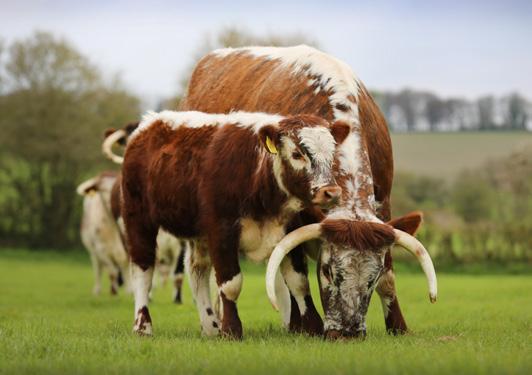
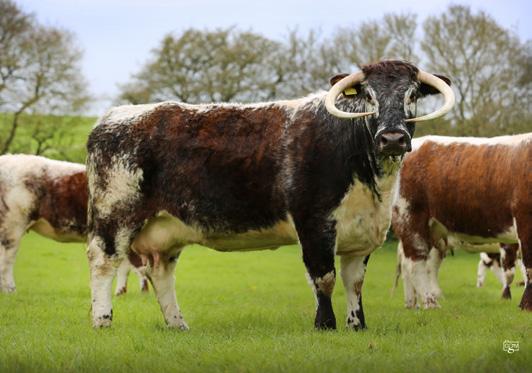

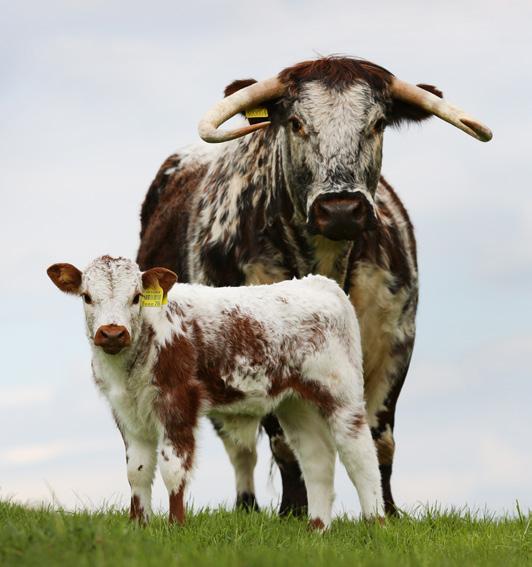
Horns are left on within the breeding herd at Etheridge as Dave and Carla like to keep the herd looking traditional in its breed character.
Alongside breeding the best they can the couple also enjoy showing their cattle to help promote the breed. “Sid and Anne Hollier got me in to showing when I used to help them and it is just addictive and I’ve well and truly got the bug.” says Dave.
Through attending local shows such as Gillingham and Shaftsbury, Dorset County and Devon County, the couple have picked up multiple awards along the way which has raised their profile. “The shows are an excellent shop window for our herd, both for selling breeding stock and boxed beef. It allows people to connect with us and our cattle and we enjoy it,” says Carla.
The ability of the Longhorn breed to fit any management system, allows Dave and Carla to enjoy farming the Etheridge herd, while both working full time and having a young family. “We have a huge sense of achievement from our love of the Longhorn and the direction in which we are taking our herd. Other breeds just would not be able to tick all the boxes for us the way the Longhorn does,” concludes Dave.
Shows are an excellent shop window for our own herd, both for marketing breeding stock and pushing the boxed beef.◖Long Ash Jahola alongside her calf. ◖Etheridge Quartz Beauty is one of the herd’s show cows. ◖Etheridge Unique and her calf. Dave and Carla Phillips, Etheridge herd
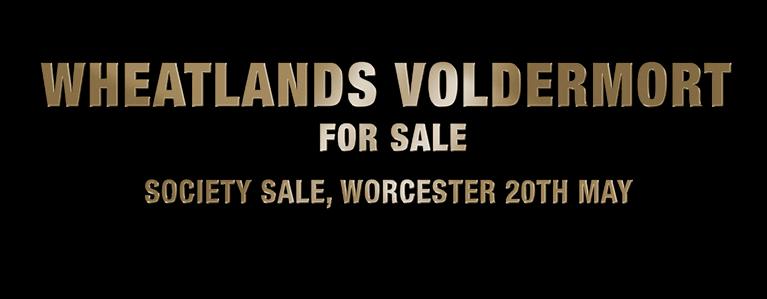
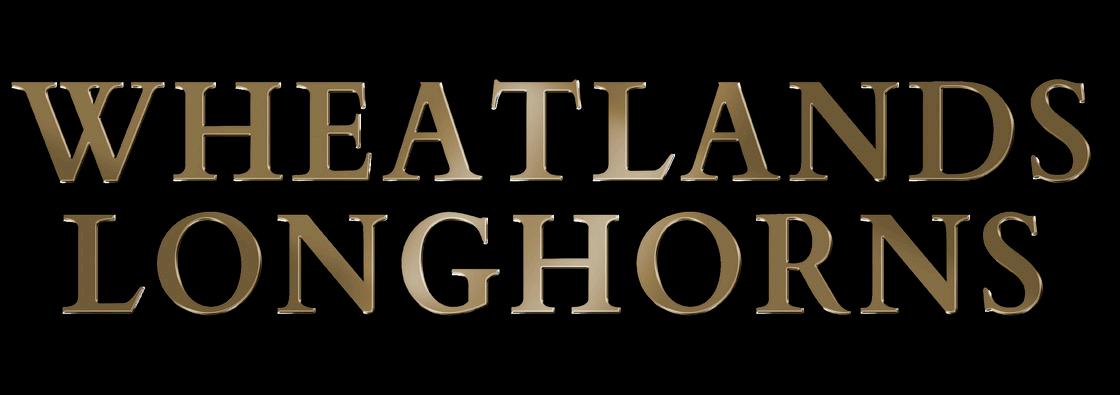
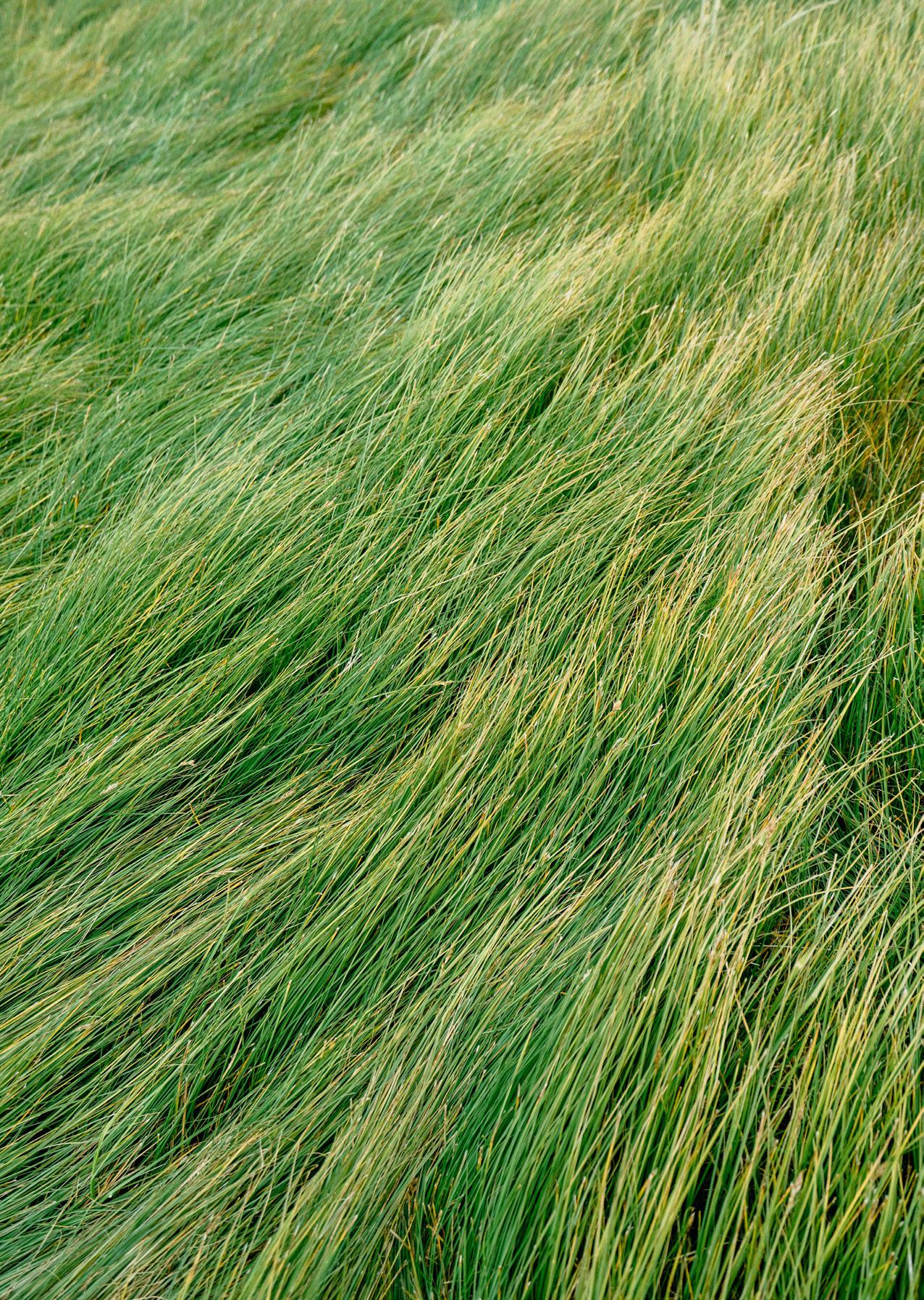

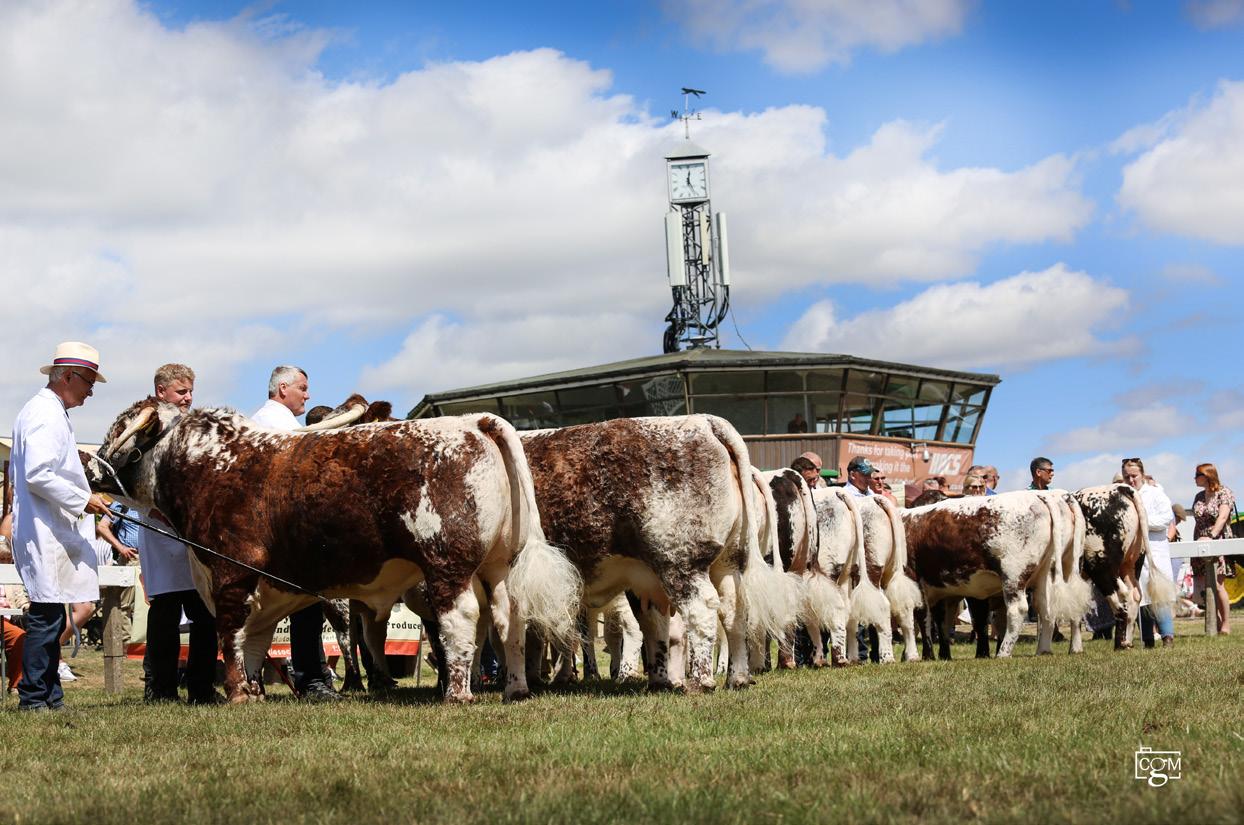
The Great Yorkshire Show will be hosting this year’s National Show for the Longhorn breed on the 11th July and stepping into the centre of the ring to take care of judging proceedings will be Danny Wyllie.
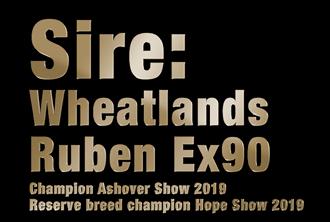
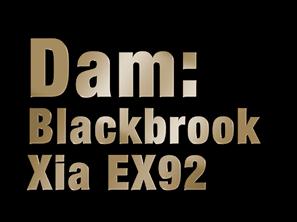
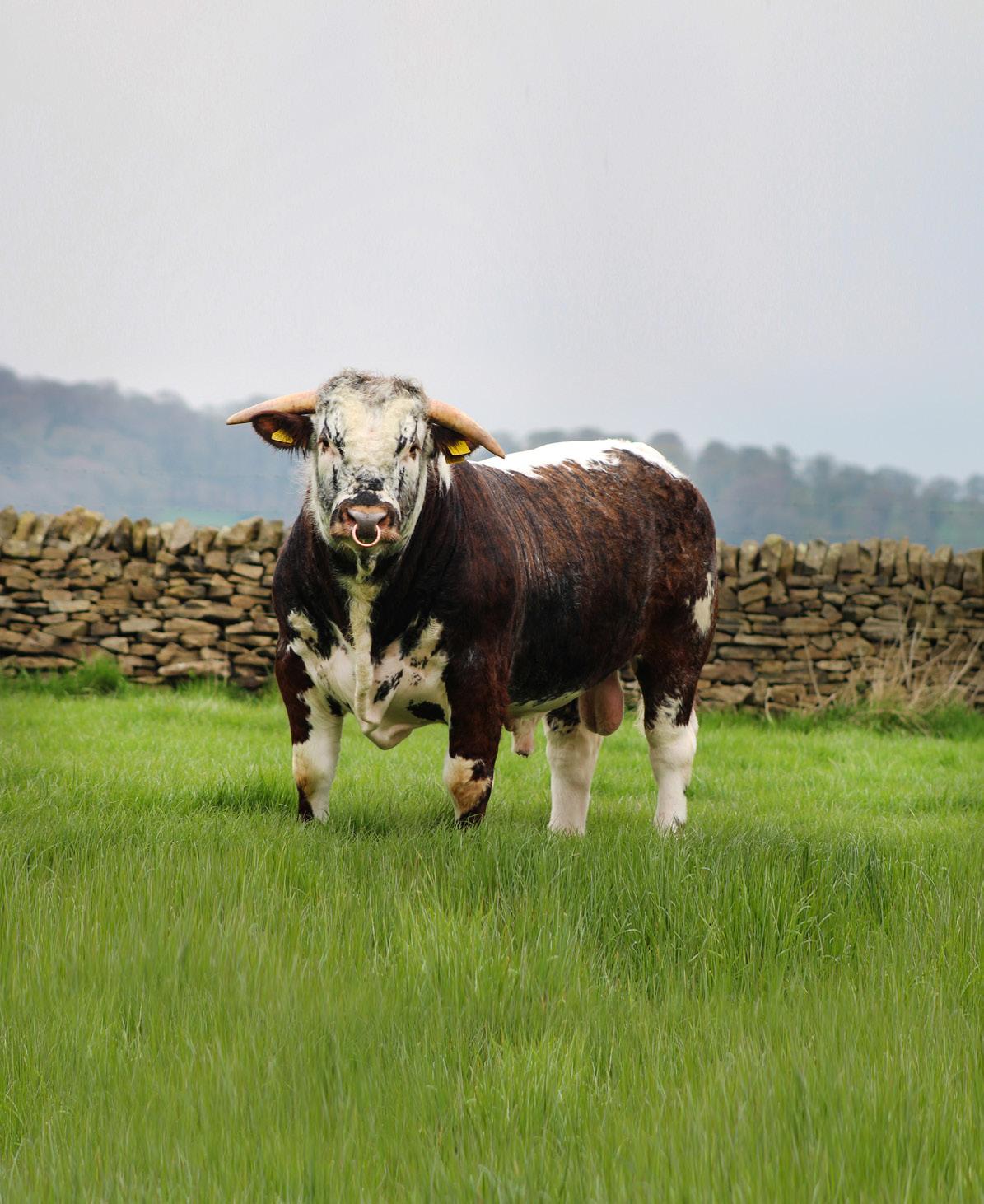
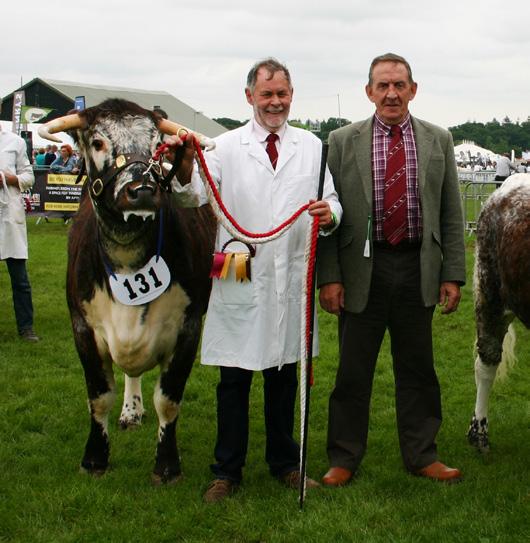
No stranger to Longhorn breeders, Danny has officiated as judge for numerous years and while isn’t a breeder himself, he is highly respected by exhibitors as being a judge who first and foremost puts the structural correctness of the breed above anything else. “The finer points of the breed’s characteristics will of course be taken into consideration, but I will be looking for an animal in good condition, not overly fat and one that parades itself well with that all important show quality,” he comments.
While the Great Yorkshire Show itself usually pulls in a fantastic entry of Longhorn cattle, due to it being a National Show means additional classes will be added to the running order for this year. So, there will be three bull classes, a cow and calf class, a senior heifer class and then two yearling heifer classes.

Commenting on the show, breed secretary Debbie Dann says: “Having the National Show at The Great Yorkshire Show is really special. We know the turnout will be of a high standard and members will be pulling out all the stops to present the very best cattle in the breed to win the coveted National Show trophies, some of which date back to the early 1900’s.”
 Following judging there will be a presentation of trophies and lunch which all members and friends are invited to.
Following judging there will be a presentation of trophies and lunch which all members and friends are invited to.
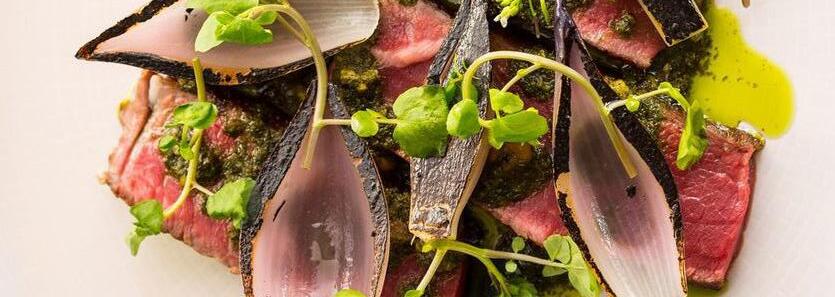 Recipe by Merlin Labron-Johnson
Recipe by Merlin Labron-Johnson
This stunning aged beef sirloin recipe is served with charred Tropea onions, pickled walnut salsa verde and fresh watercress for a memorable main course. Chef Merlin Labron-Johnson uses Longhorn beef aged for 86 days for unparalleled depth of flavour and texture.
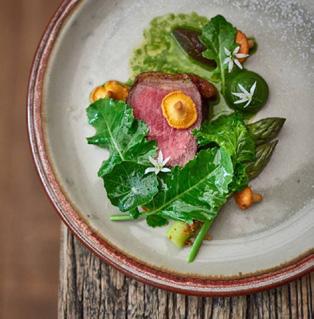
Robert says “Taste everything! The difference between a good meal and a great one is in the details; ensuring that everything is seasoned correctly will really elevate your cooking.”
800g piece of beef sirloin
8 asparagus spears
50g toasted hazelnuts, roughly chopped
20 small girolle mushrooms
400g salted butter
20g beef dripping
5 sprigs thyme
2 cloves garlic
BEEF SIRLOIN
600g of aged sirloin of beef
50g of salted butter, high-quality
olive oil
flaky sea salt
TROPEA ONIONS
5 Tropea onions, large red wine vinegar
olive oil
salt
PICKLED WALNUT SALSA VERDE
1 bunch of parsley, small, finely chopped
100g of walnuts, toasted and finely chopped
6 pickled walnuts, finely chopped
400ml of light olive oil
1 tbsp of Dijon mustard
1 tbsp of capers, finely chopped
1 anchovy, finely chopped lemon juice, if needed
TO SERVE
Koppert Cress hippo tops water cress
olive oil
salt
2 tbsp sherry vinegar
1. Preheat the oven to as high as it can go.
2. To begin, prepare the onions. Place the onions whole onto a large square of tin foil and season with salt and oil.
3. Fold the tin foil over the onions to create an envelope and seal the edges. Bake in the oven for 40–55 minutes until cooked but not soft. Set aside.
4. To make the salsa verde, mix together all of the ingredients and season with salt, plus a little lemon juice if needed.
5. To prepare the sirloin, rub the beef with oil and salt and set aside in a warm place.
6. Heat a heavy-bottomed cast iron pan until smoking hot and sear the beef on 1 side for 1 minute
7. Turn the beef onto the other side and leave for 20 seconds. Add the butter and baste the meat for a further 40 seconds
8. Remove the beef from the pan and place on a tray. Pour the cooking fat from the pan over the beef and leave to rest in a warm place for 8–10 minutes
9. Meanwhile, cut each onion in half and place cut-side down onto a hot pan or plancha with a dash of oil. Once wellcoloured, remove from the heat, separate each onion half into individual petals and season with salt and a little vinegar
10. Pour the fat and juices from the beef into a pan and add the salsa verde. Warm gently over a low heat
11. Slice the beef and arrange over warmed plates. Dress with the warm salsa verde and onion petals, then finish with some dressed watercress
8 kohlrabi leaves
8 turnip leaves
4 nasturtium leaves
12 wild garlic flowers
For the wild garlic purée
100g baby spinach
300g wild garlic leaves
50g salted butter
50g double cream
For the mushroom ketchup
500g chestnut mushrooms
6g salt
20ml sherry vinegar
30ml dark soy sauce
20g caster sugar
4g agar agar
1. To make the mushroom ketchup (in advance).
2. Finely chop the mushrooms then mix with the salt and hang in a muslin cloth over a bowl overnight to drain. Reserve the liquid but discard the mushroom pulp.
3. Bring the soy, sugar and sherry vinegar to the boil and then use the mixture to season the mushroom juice to your own taste.
4. Add the agar agar to the liquid, bring to the boil and whisk constantly for about 10 seconds until fully dissolved, pour into a tray and place in the fridge to set.
5. Once set, place in the blender and blend to a thick purée consistency, retain at room temperature.
6. To make the wild garlic purée
7. Melt the butter in a large pan and add the spinach and the garlic leaves. Sweat until fully cooked. You can check this by rubbing the leaves between your fingers – if it totally disintegrates it’s cooked.
8. Place the sweated leaves into a blender with the double cream and blend on full power for around two to three minutes until totally smooth. Season.
9. Push the purée through a fine sieve and then cool down as quickly as possible.
10. Just before you are ready to cook the beef, warm the purée in a pan, check the seasoning, put it into a squeezy bottle and keep warm.
11. To make the beef and asparagus
12. Remove the beef from the fridge and allow to rest, uncovered, for at least two hours before cooking.
13. Peel the asparagus and trim off the woody ends.
14. Preheat a medium-sized frying pan to a medium heat then add in the beef dripping.
15. Heavily season the beef with salt and pepper then put it into the pan, fat side down. Allow the fat to render out for around three to four minutes, then add 100g butter to the pan with the thyme and garlic. Colour the beef on all sides, turning every minute to ensure even cooking. Once coloured, turn the heat down to low and continue to cook as desired (for medium rare, as per the picture, the core temperature will be 45°C). Rest the meat in a warm place for as long as you cooked it, brushing with its butter every five minutes.
16. Bring 300g butter, 300ml water and 9g salt to the boil to make an emulsion. Add the asparagus then turn down to a low heat. Cook for five to eight minutes, then remove from the emulsion, place on a warm tray and coat in the hazelnuts. Keep the emulsion.
17. To serve.
18. Trim both ends of the beef then cut into four evenly sized slices. Very lightly season the exposed pink meat with salt and place on warmed plates.
19. Place two spears of asparagus next to the beef then put a large dot of wild garlic purée just above it.
20. Cook the girolles, kohlrabi and turnip leaves in the emulsion for 30 seconds, then drain and scatter over the beef and asparagus.
21. Place a teaspoon of the mushroom ketchup on the plate and garnish with the garlic flowers and nasturtium leaves.
(please use block capitals throughout)
Name:
Address:
Telephone No: Mobile No
Email Address:
DEFRA Herd Number (6 digit eartag number) UK
Post Code:
I/we wish to register the Herd Name: (The herd name is the prefix name given to all pedigree Longhorn calves born on your farm)
✓ I/We wish to become a member/s of the Longhorn Cattle Society in the category
✓ JOINING FEE (all categories, once only) £10 + VAT (£12.00)
Corporate Life (25 years) £800
Life Membership £500
Full Membership (for members wishing to register cattle) £55 per annum
Associate Membership (for non-registering members) £27.50 per annum
Junior Membership (up to 18 years) £5 per annum
✓ New members who join after 1st October will be fully paid up until 31st December in the following year.
I enclose a cheque (made payable to the Longhorn Cattle Society) for the relevant membership and joining fee
I have paid the relevant membership and joining fee by BACS transfer to:
BANK HSBC A/C NAME The Longhorn Cattle Society SORT CODE: 40-27-06 A/C NO. 01090534
I agree to sign a standing order form to pay the subscription currently in force, and request a standing order form.
Membership information held on the Society database - consent


I/we understand that the information provided is held in the Society database, that it will be used to create the Herdbook, pedigree certificates, show catalogues, sale catalogues and to communicate by post, email and bulk mail. It may also be shared with other Society members or third parties with similar interests.
The Society’s privacy policy is available on the website or on request.
I we agree to abide by the Society Rules and Regulations so long as I/we remain a member of the Society
Signed Date
Follow on Facebook, Twitter and Instagram
20th May Spring Show and Sale
Worcester Livestock Market
11-14th July
National Show at the Great Yorkshire Show
(Longhorn classes judged on Tuesday 11 July)
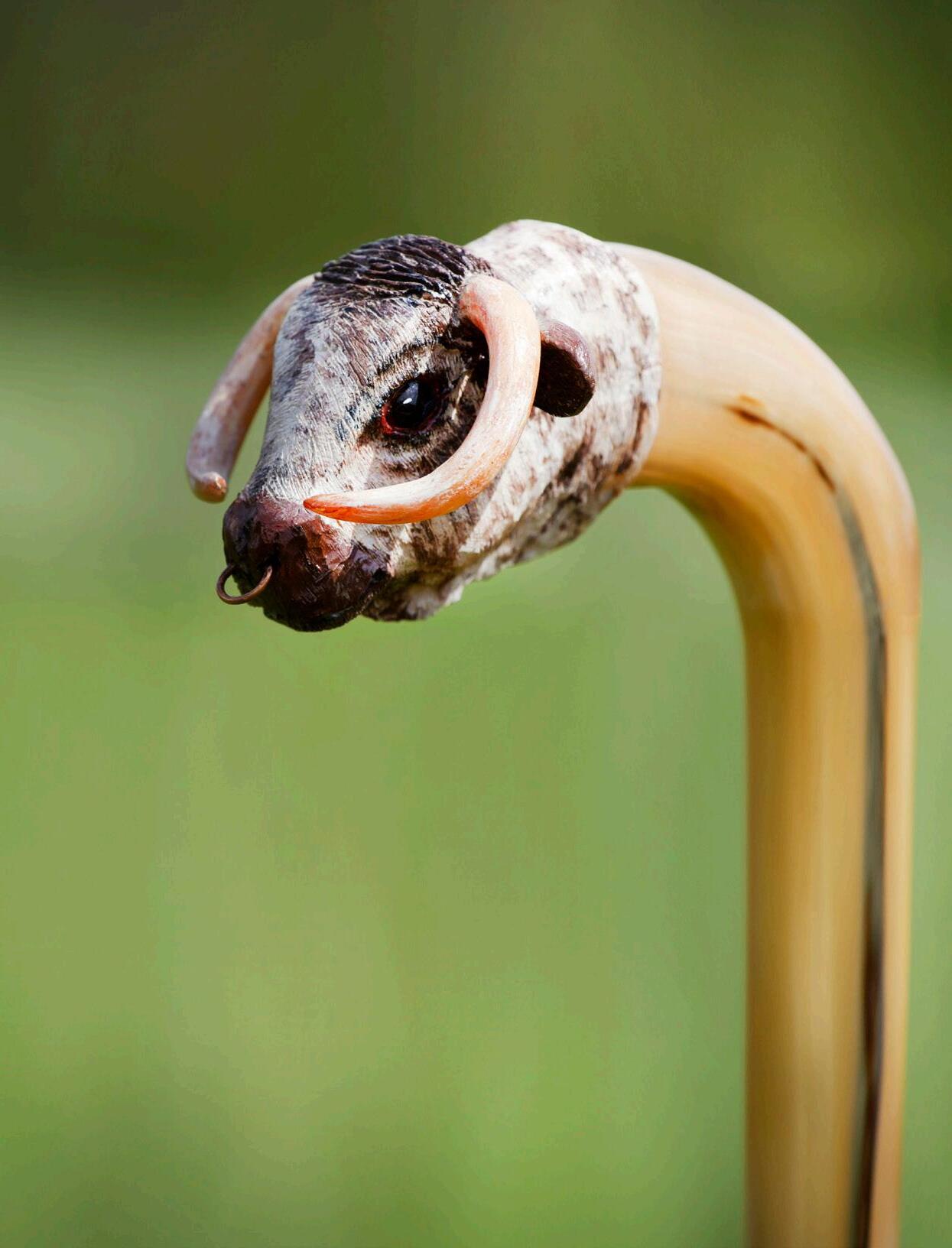
Sunday 6th August
Society summer visit Halliloo Longhorns, Woldingham, Surrey
7th and 8th October
Society AGM weekend
Longbridge Longhorns and Southfield Longhorns,Yorkshire
